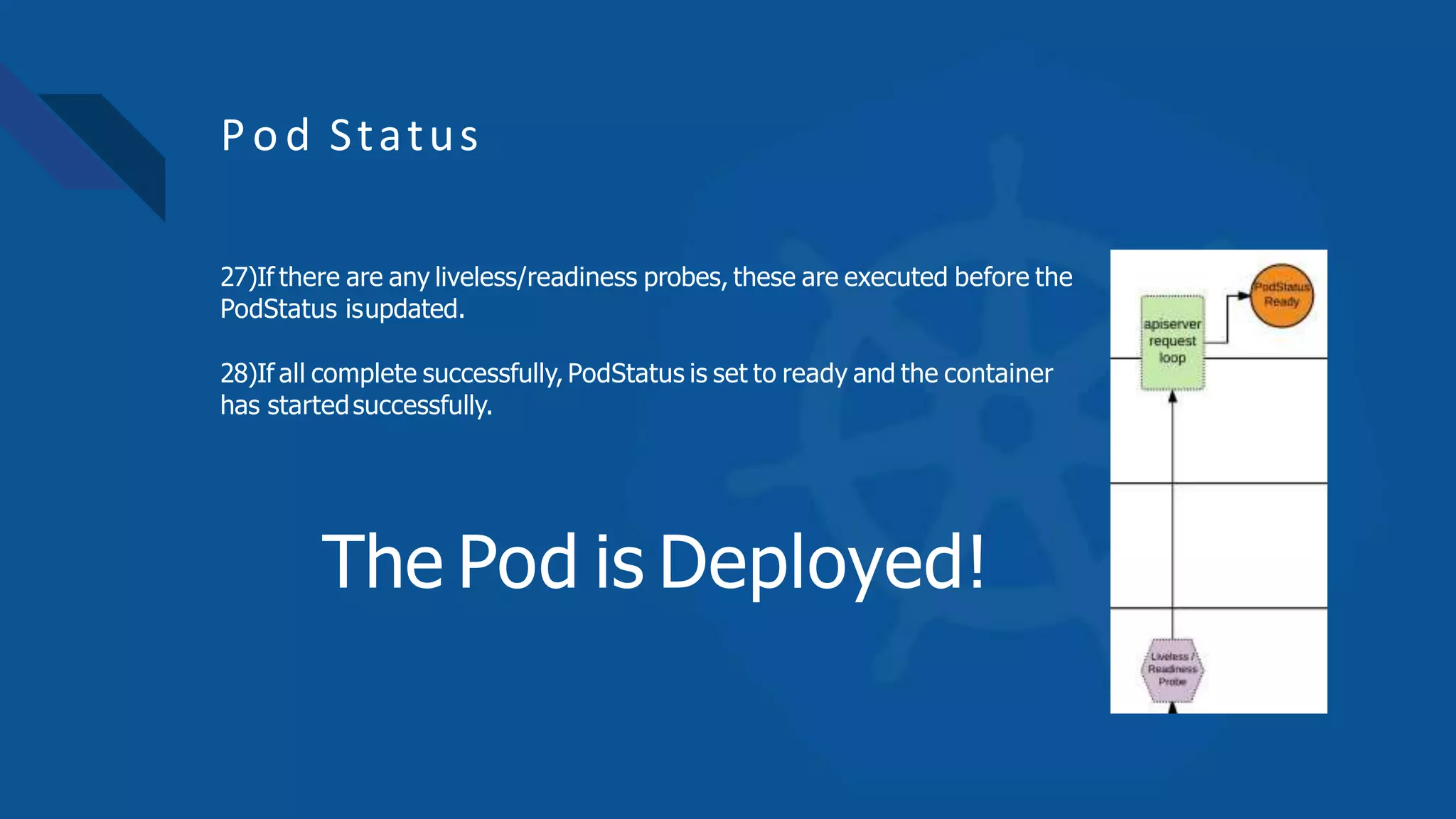Kubernetes is an open-source system for automating deployment, scaling, and management of containerized applications. It groups containers that make up an application into logical units for easy management and discovery called pods. Kubernetes masters manage the cluster and make scheduling decisions while nodes run the pods and containers. It uses labels and selectors to identify and group related application objects together. Services provide a single endpoint for pods, while deployments help manage replicated applications. Kubernetes provides mechanisms for storage, configuration, networking, security and other functionality to help run distributed systems reliably at scale.

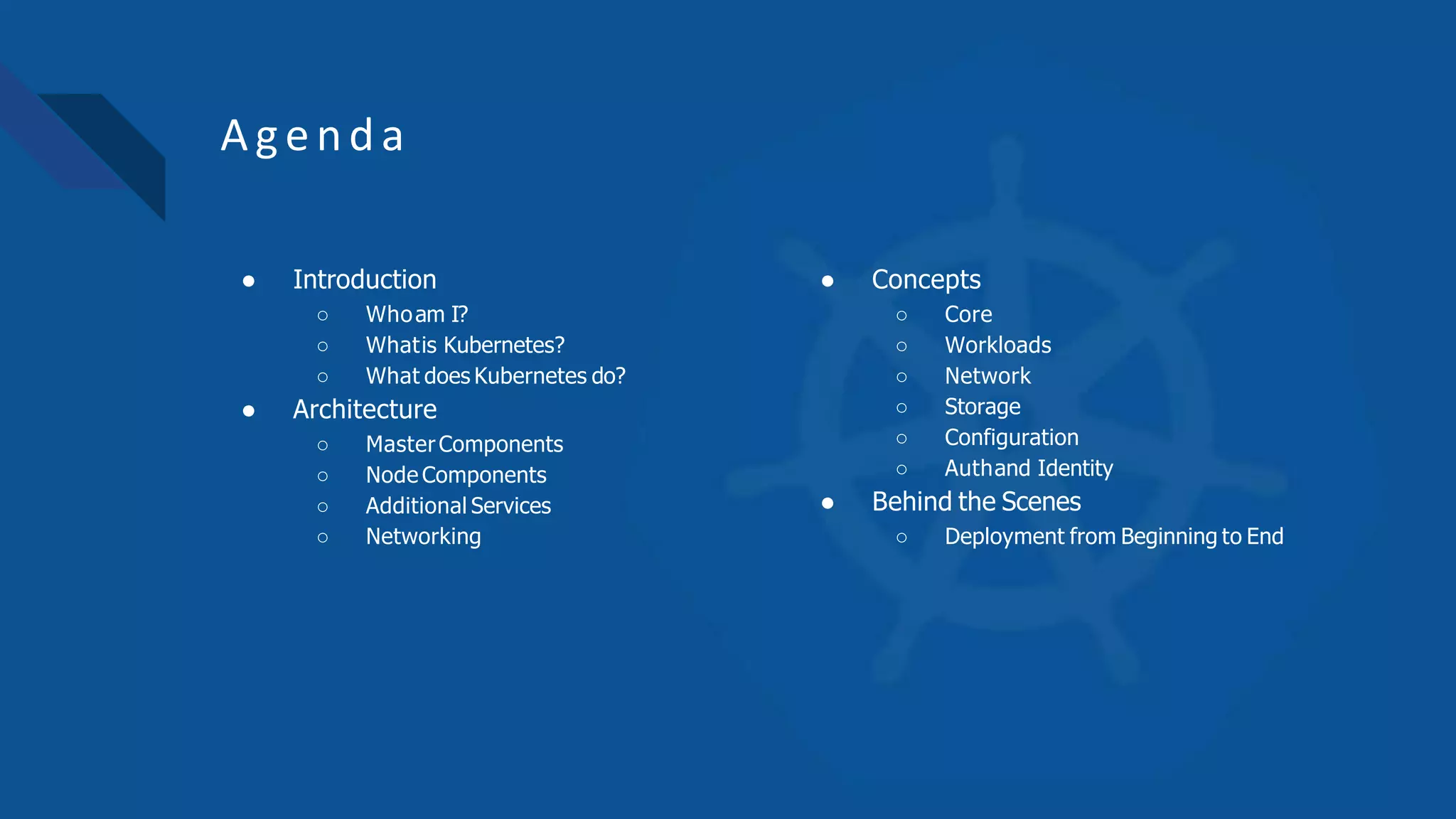
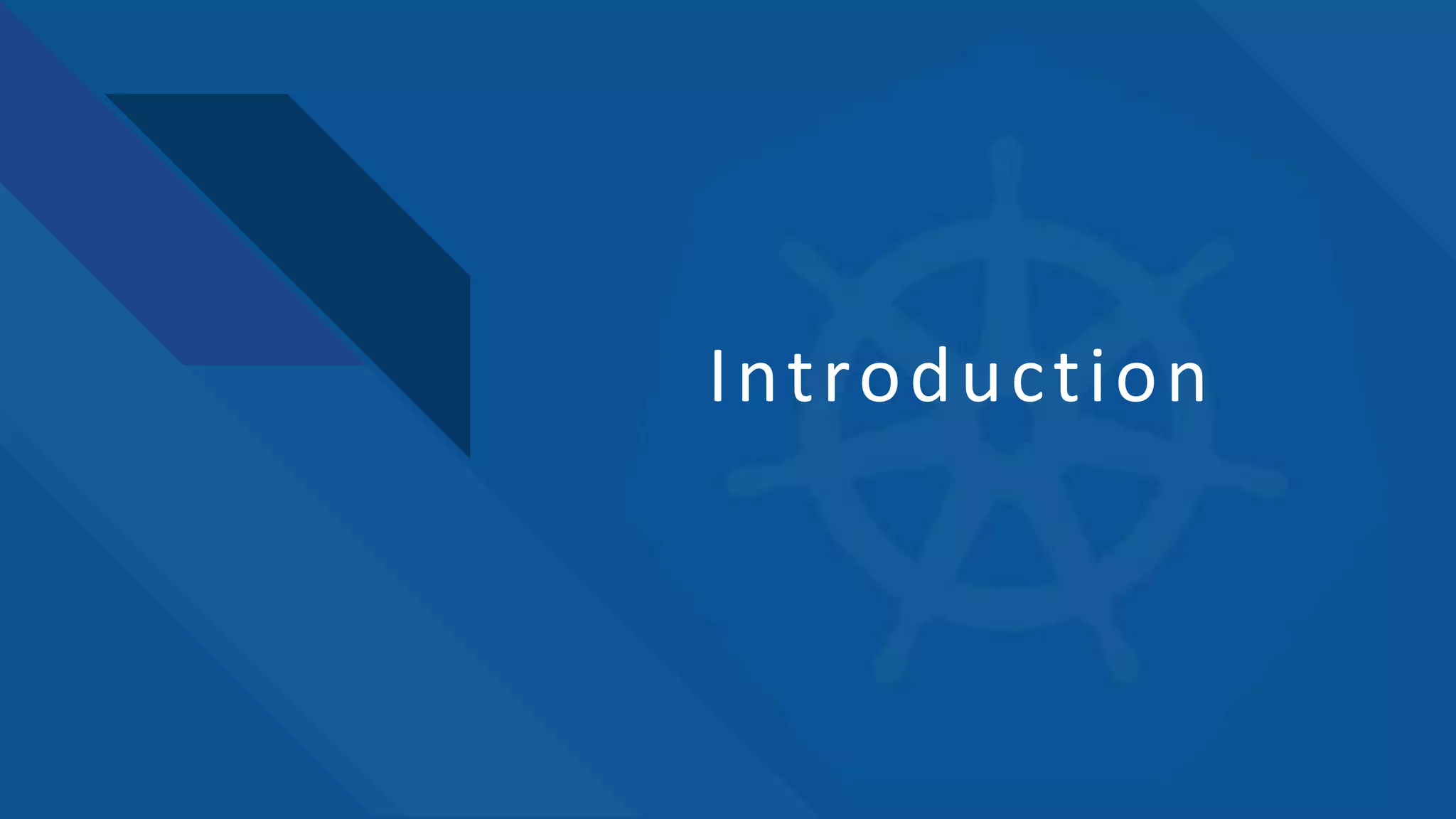

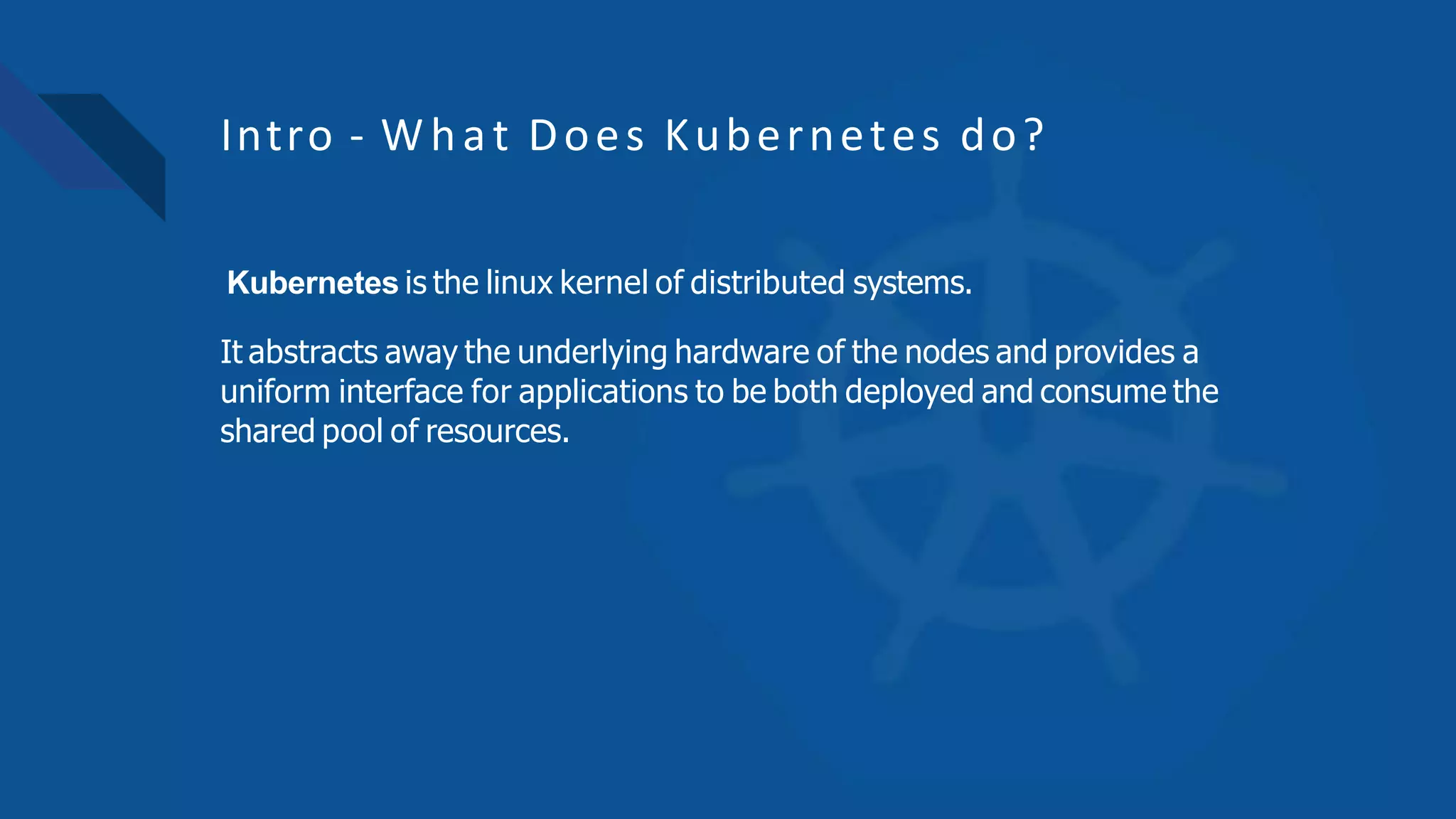
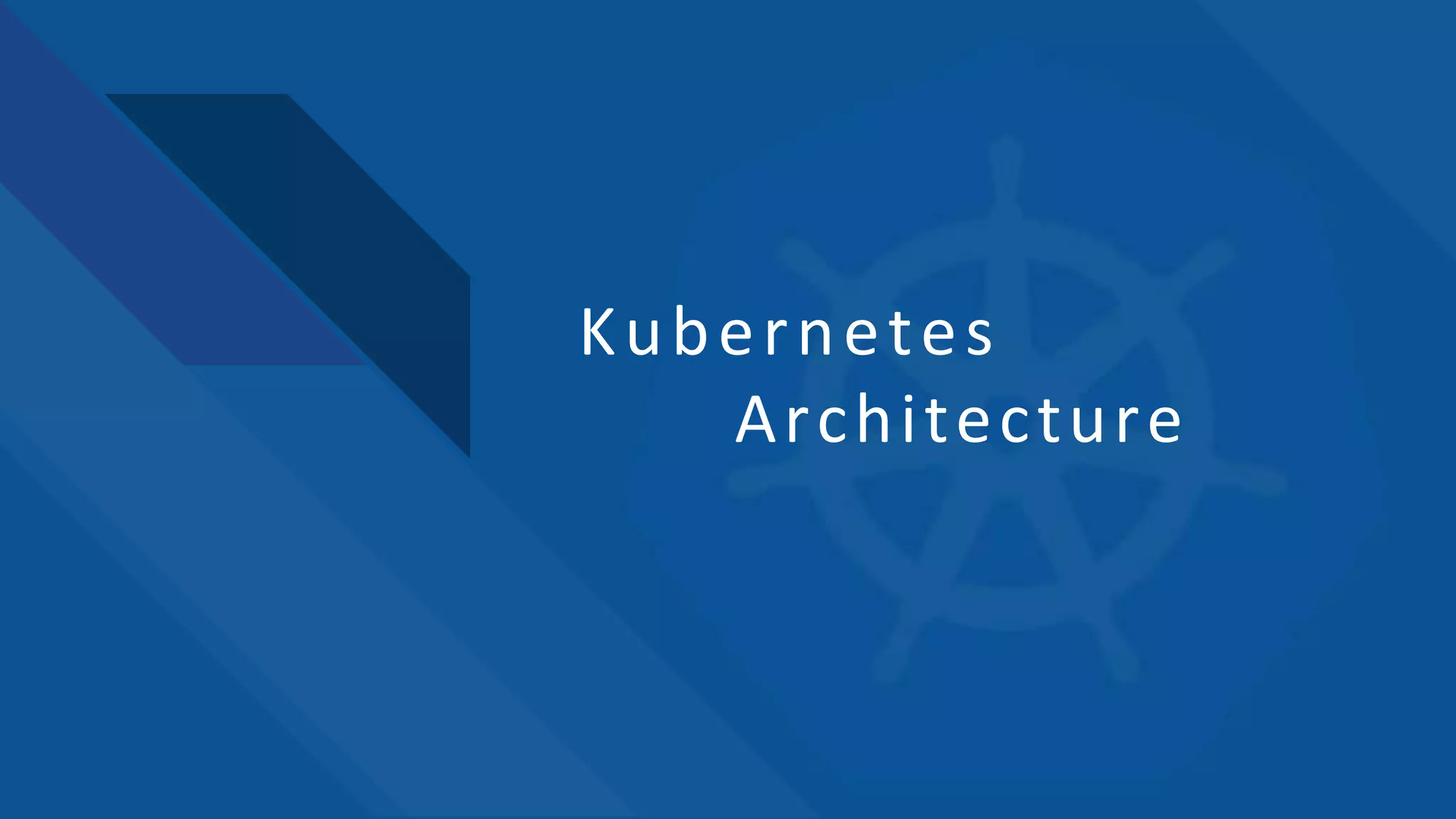
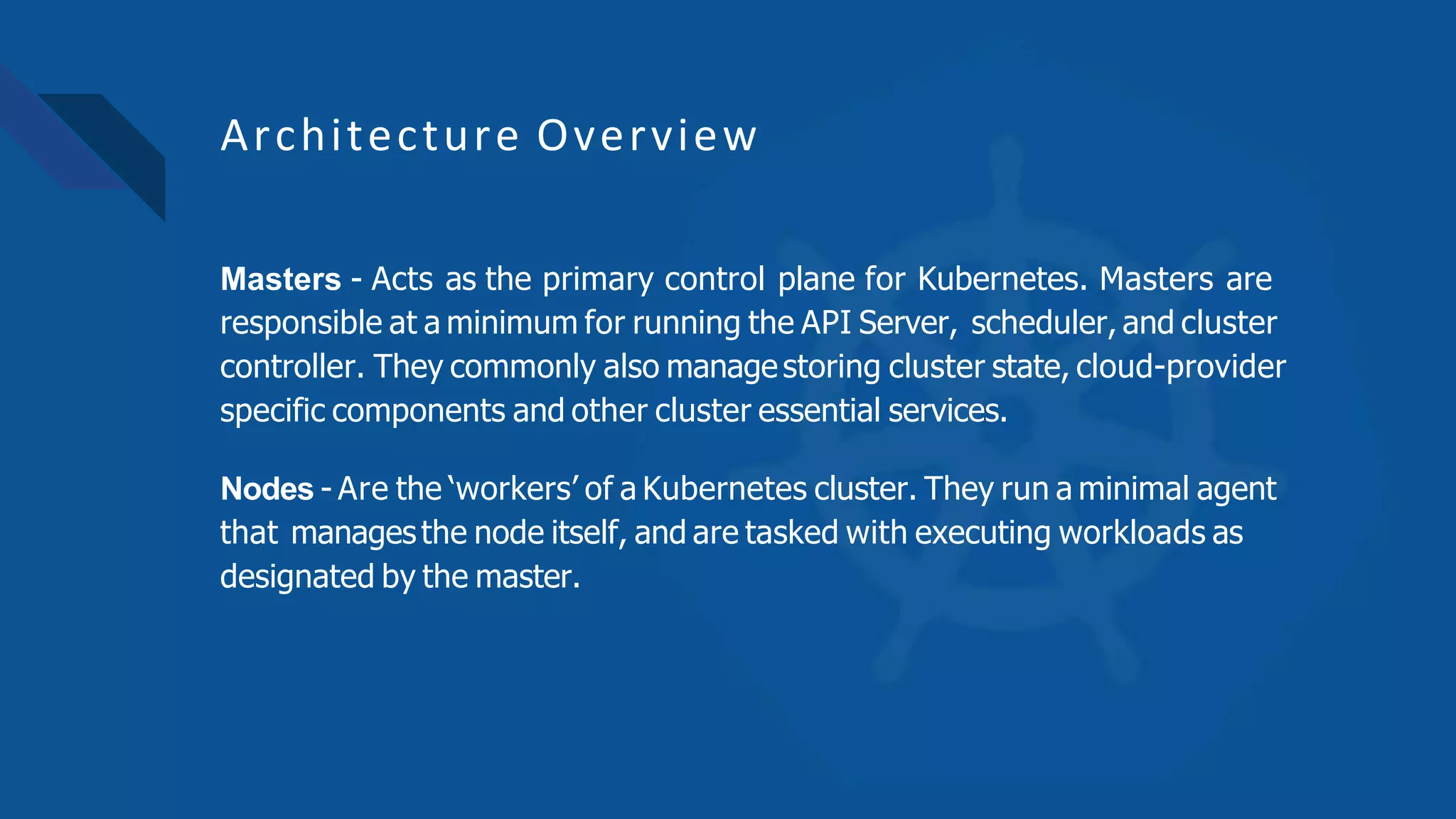
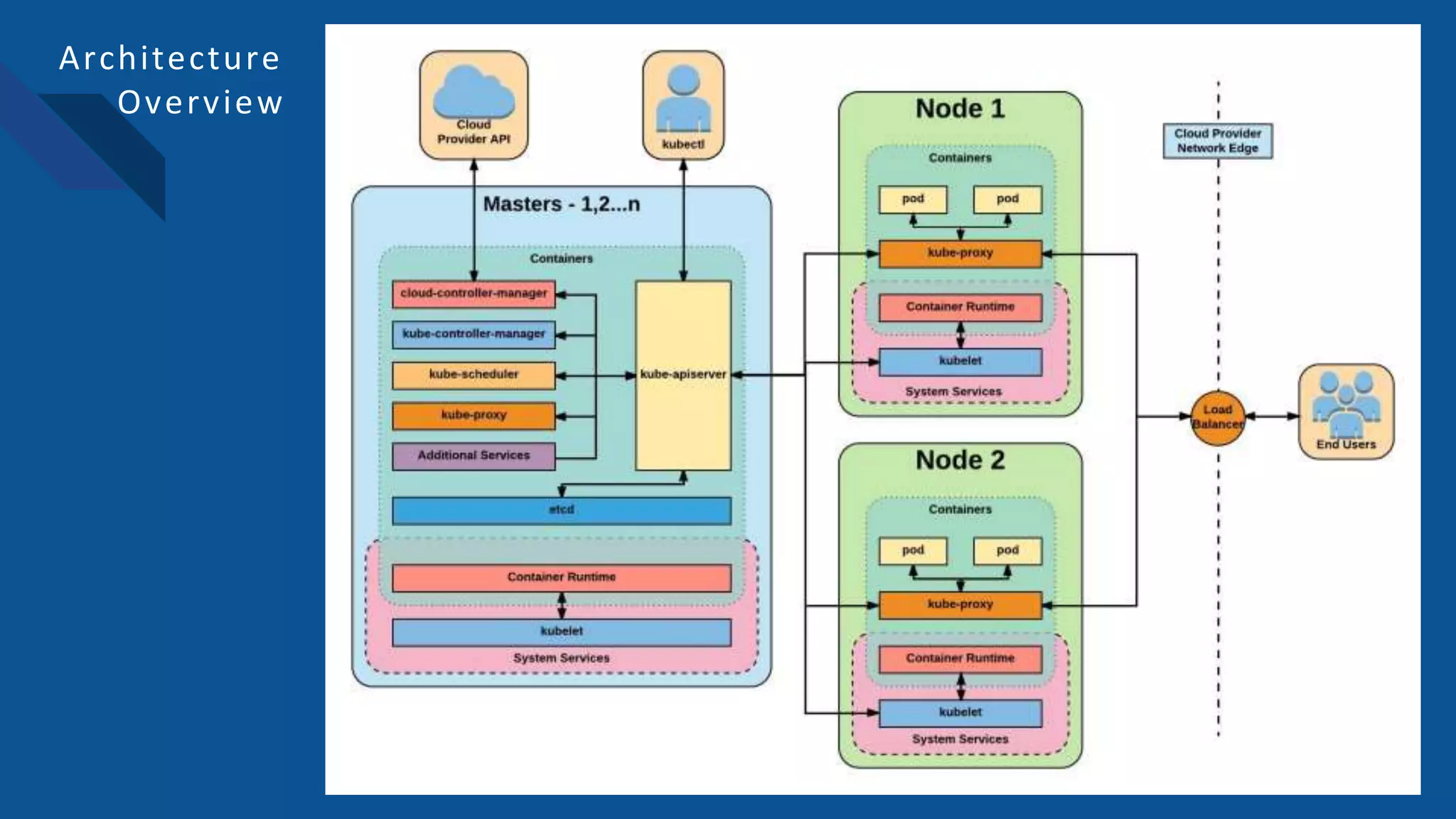
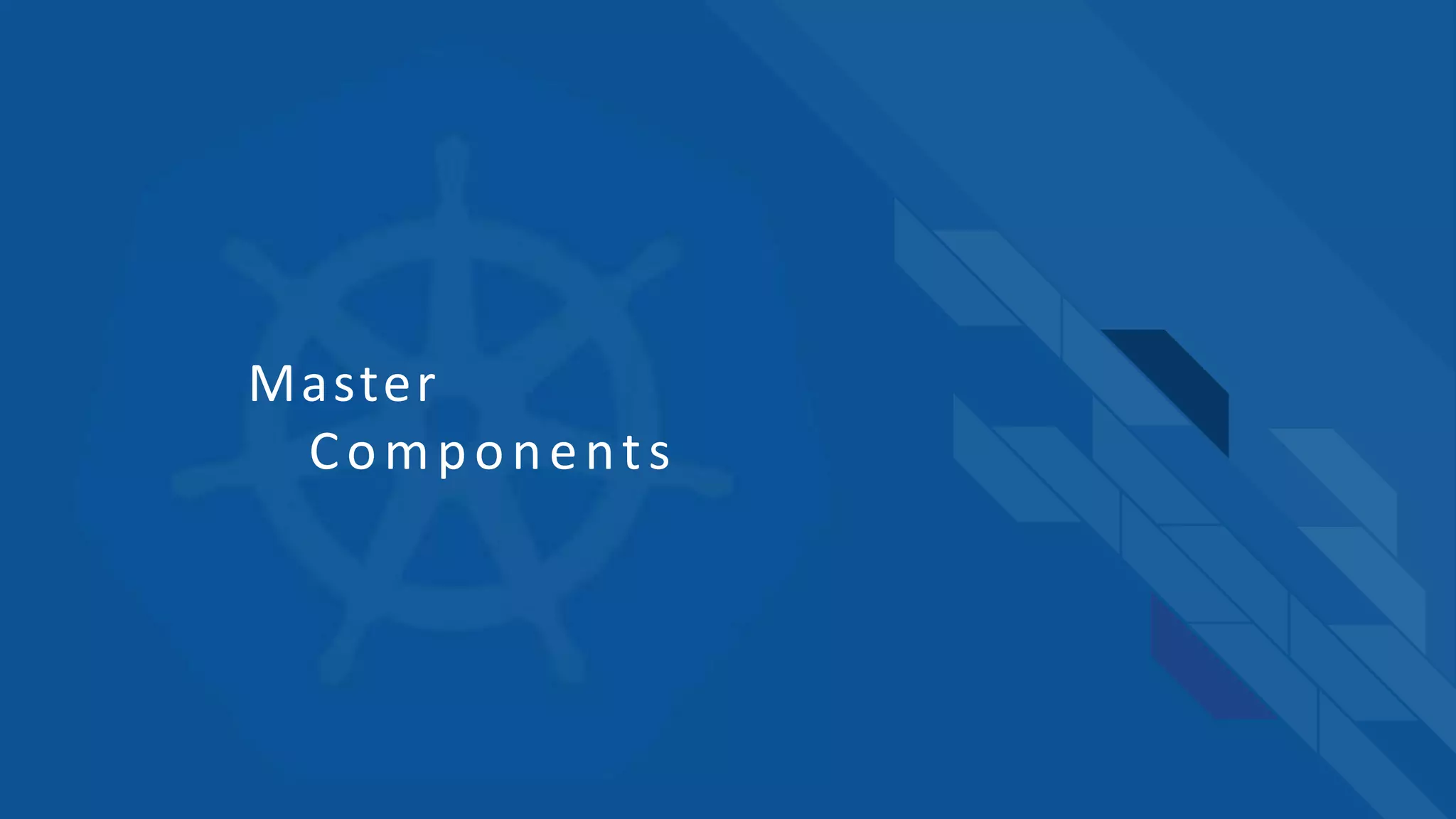
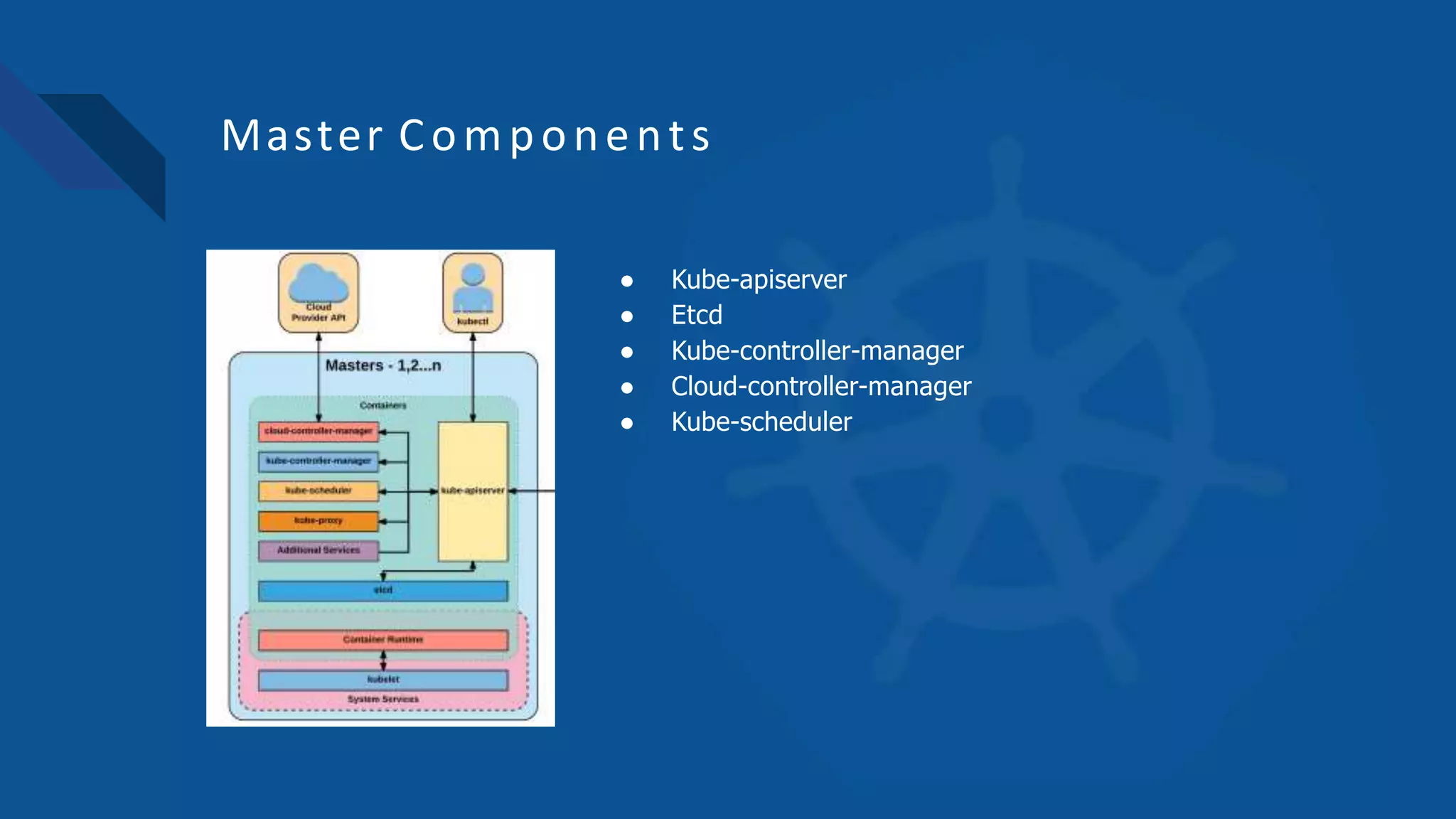
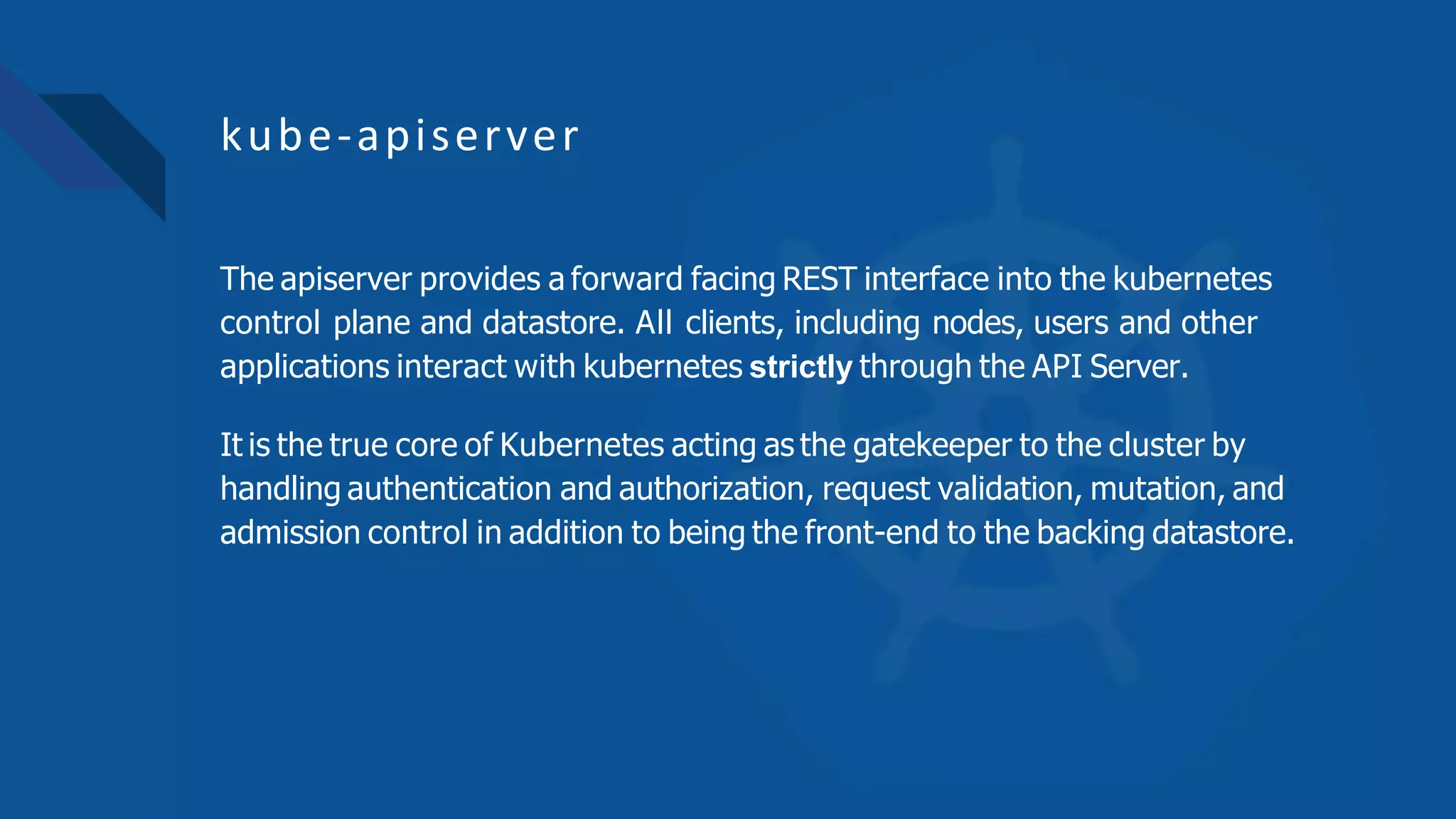

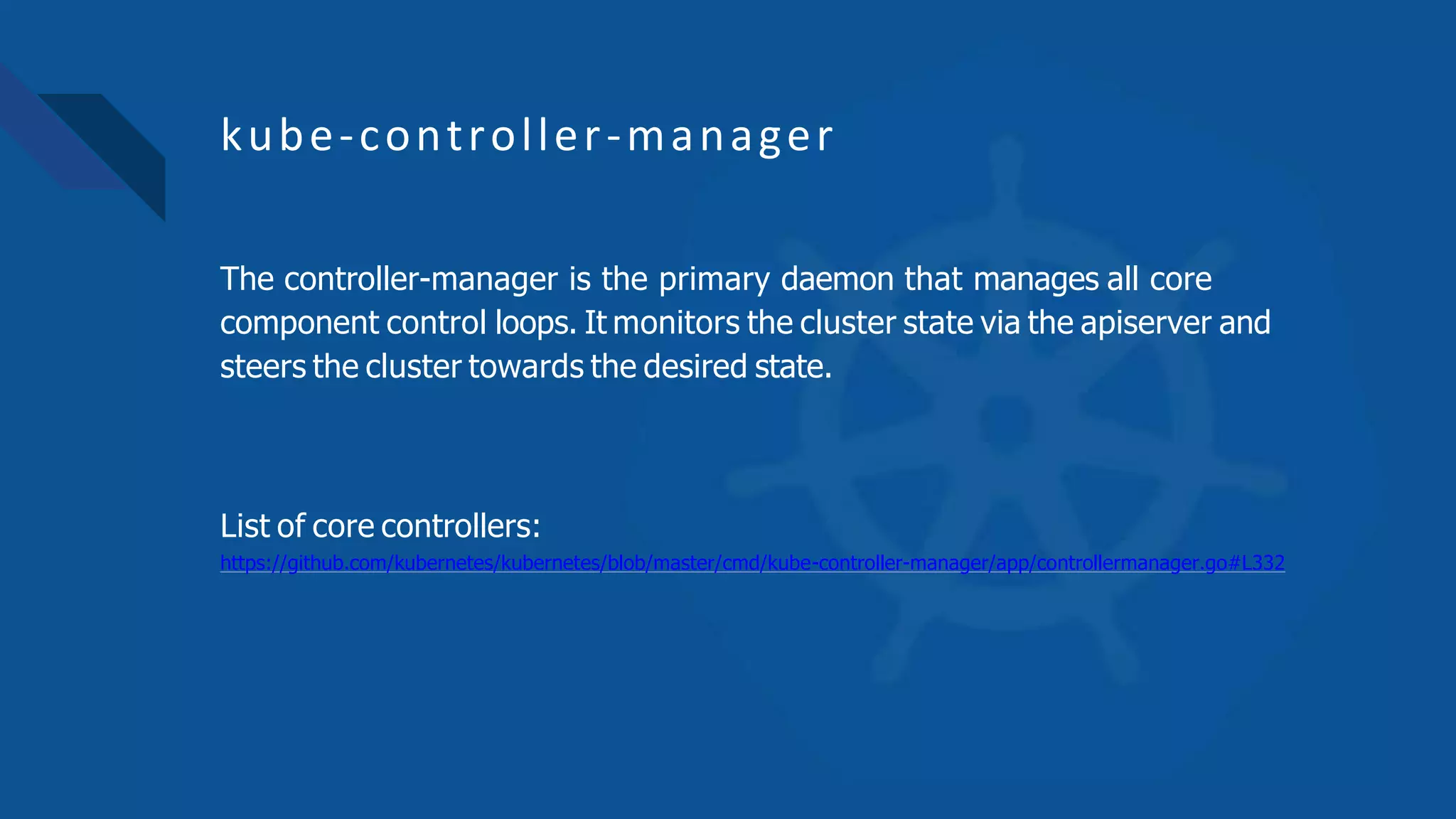



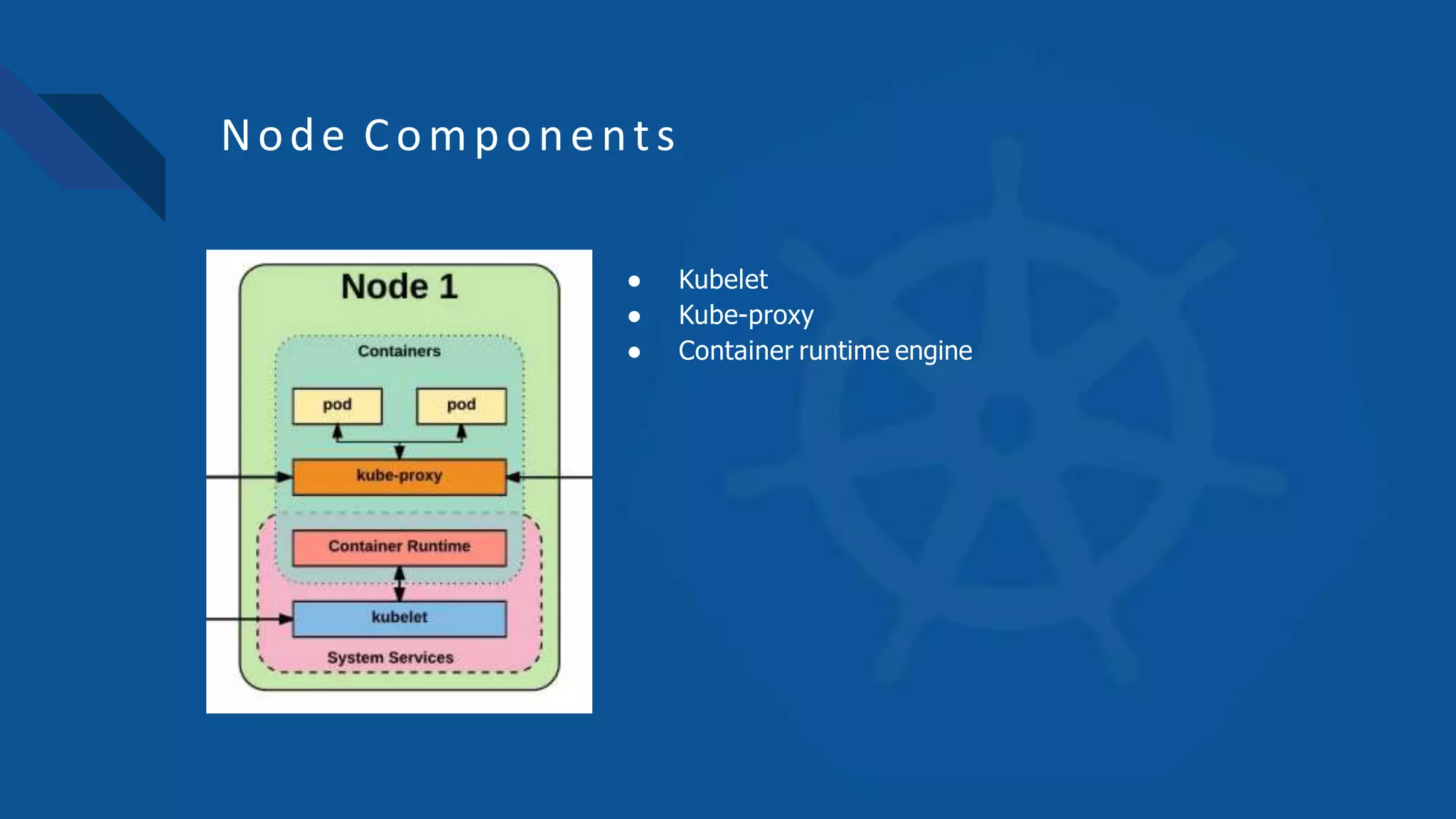
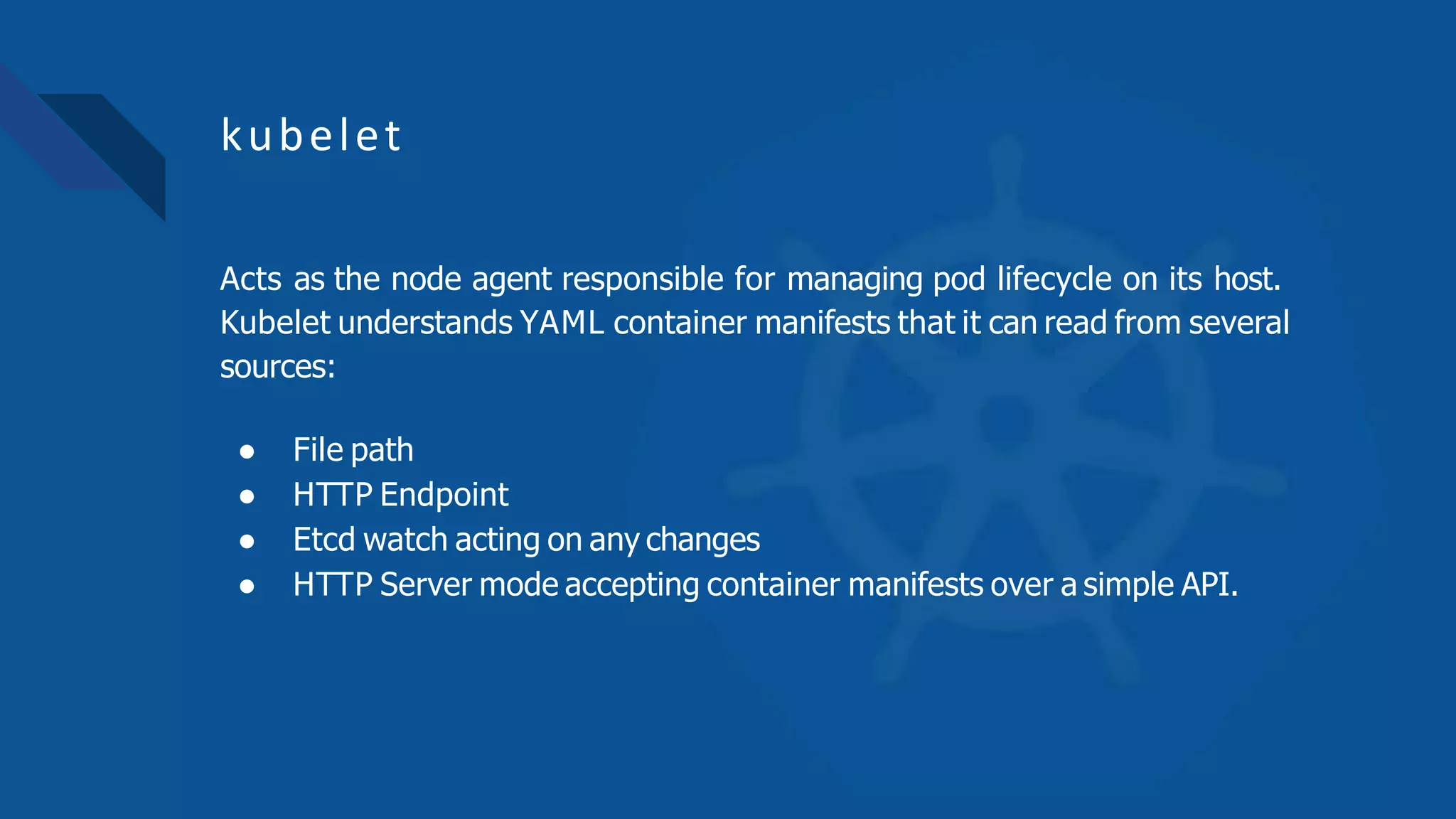


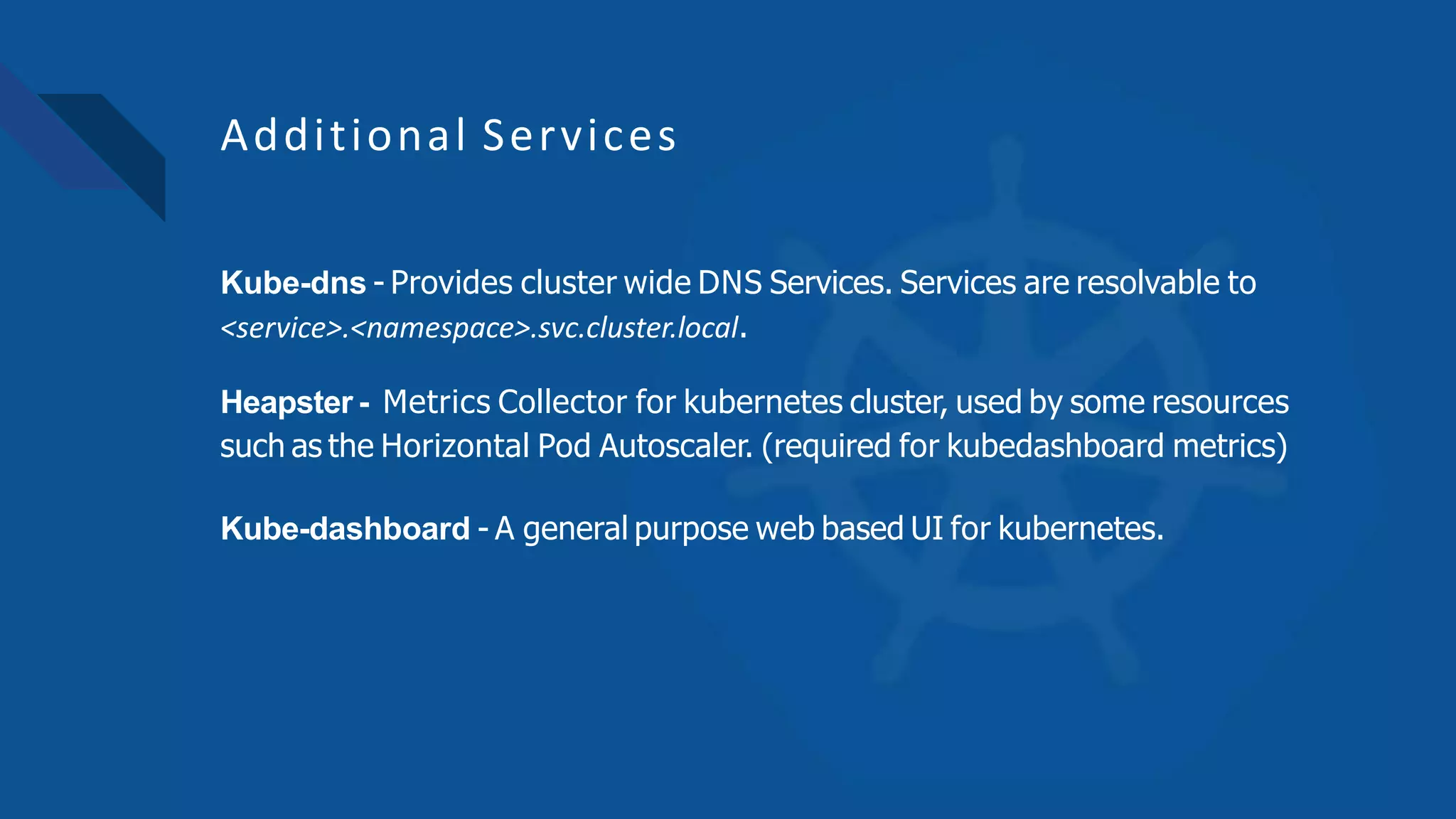


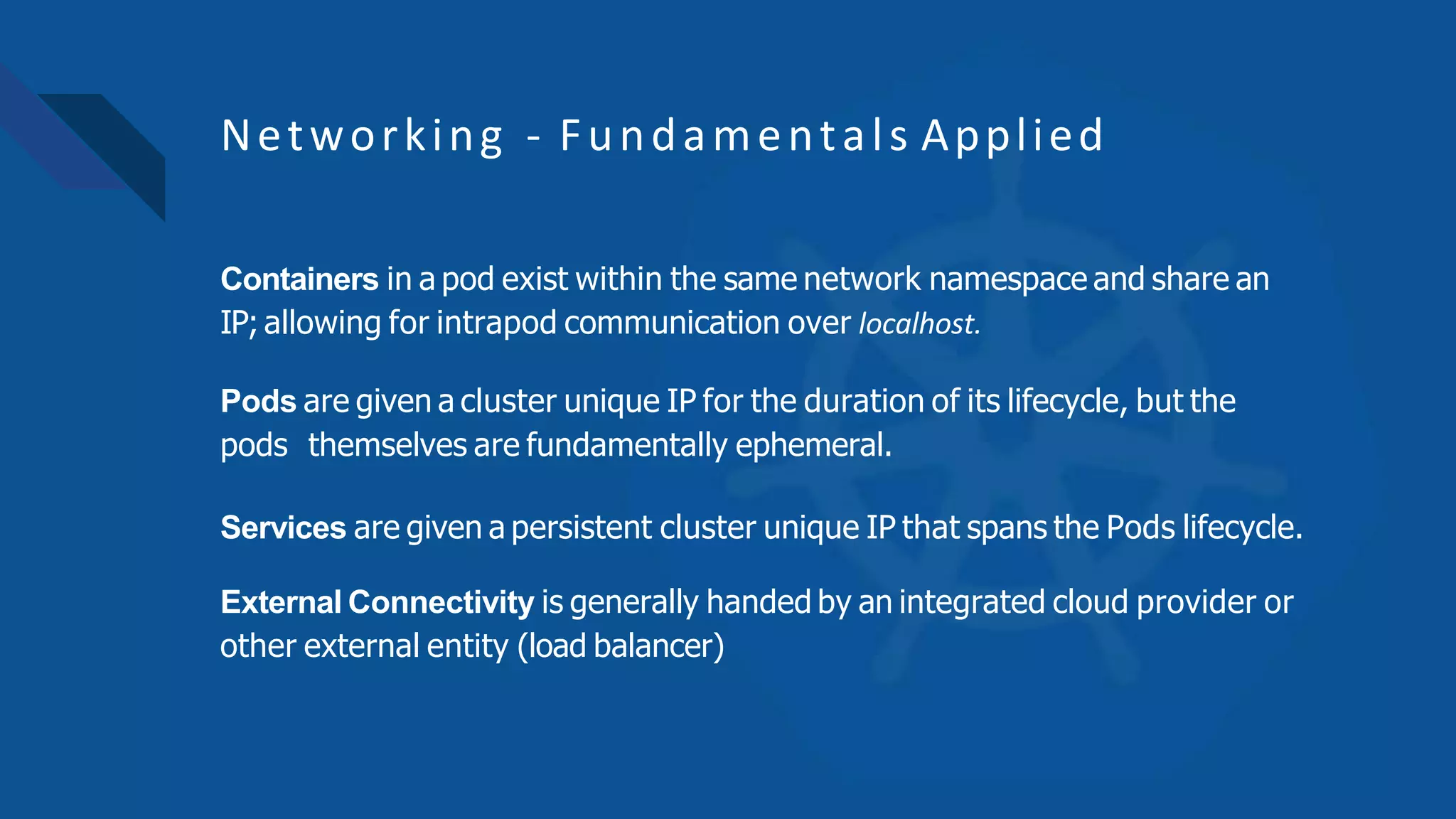

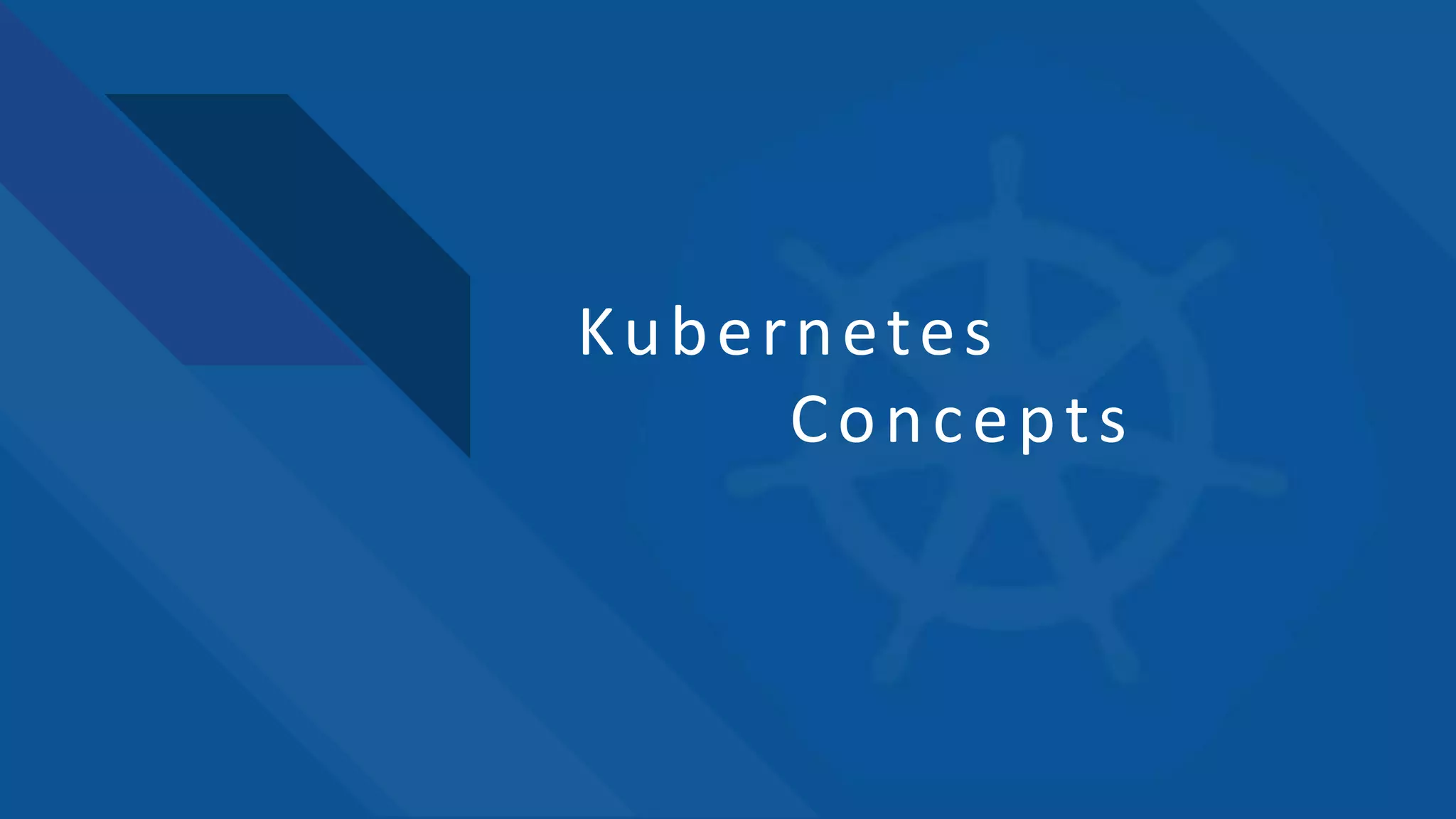
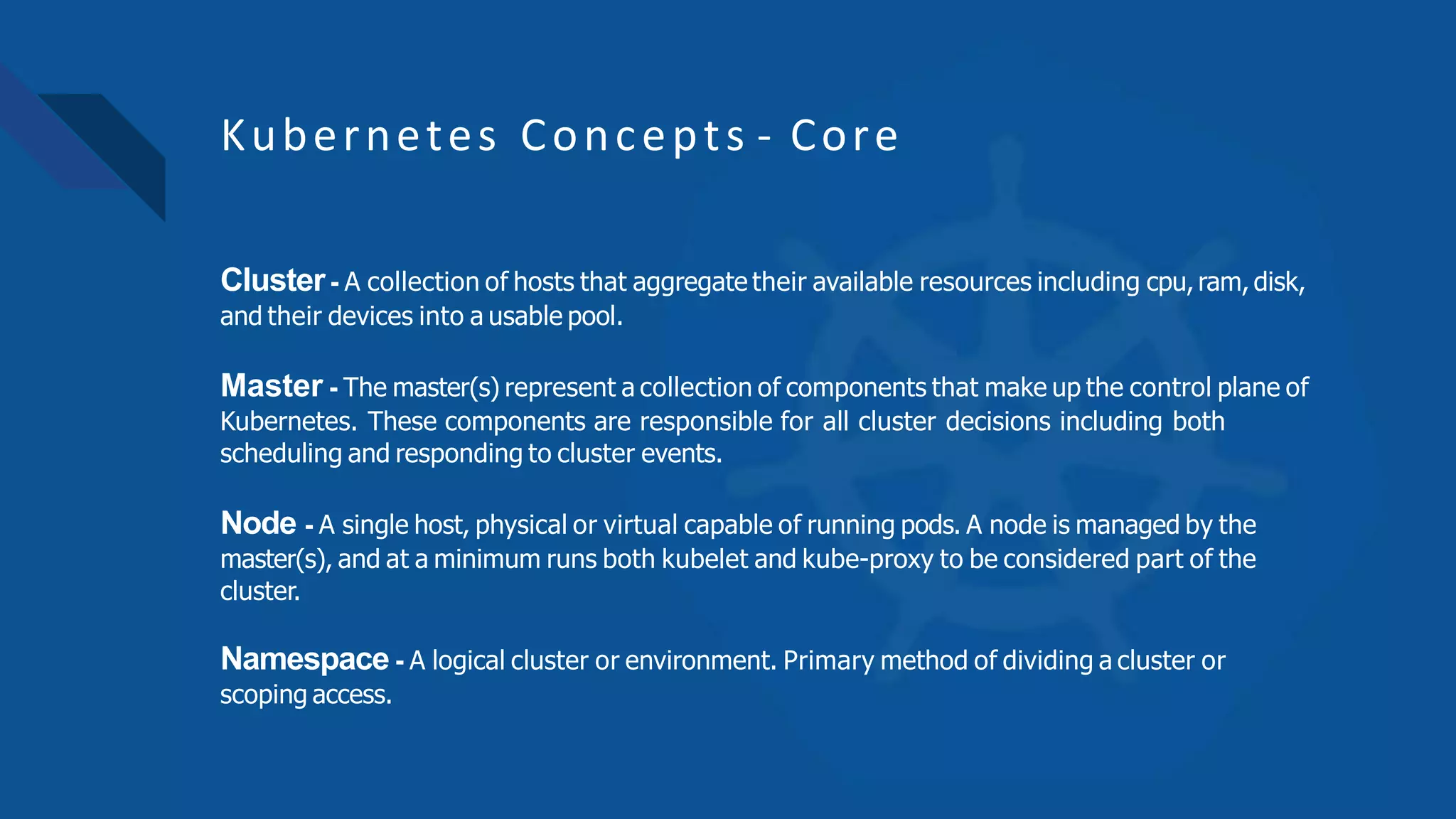
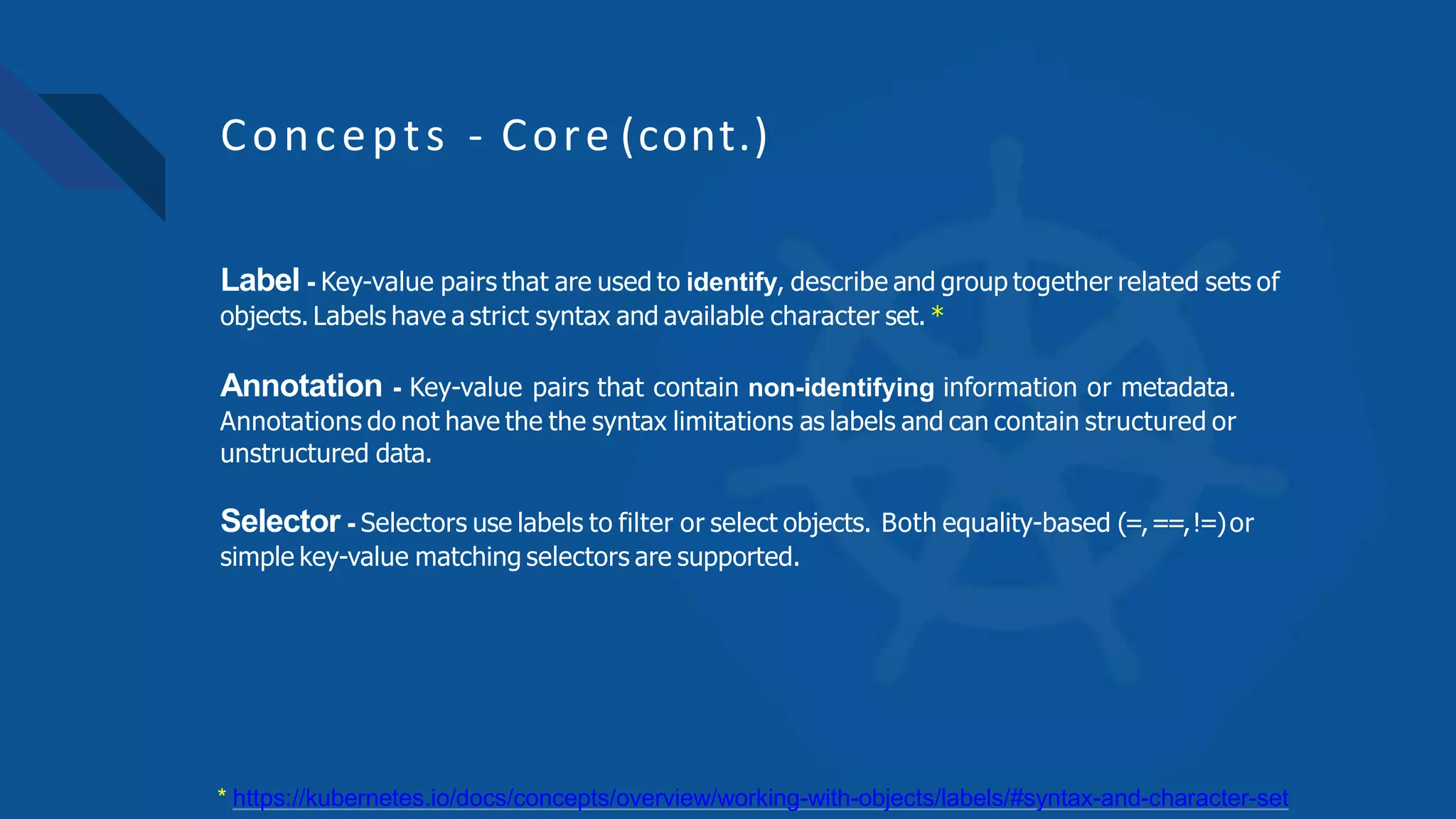
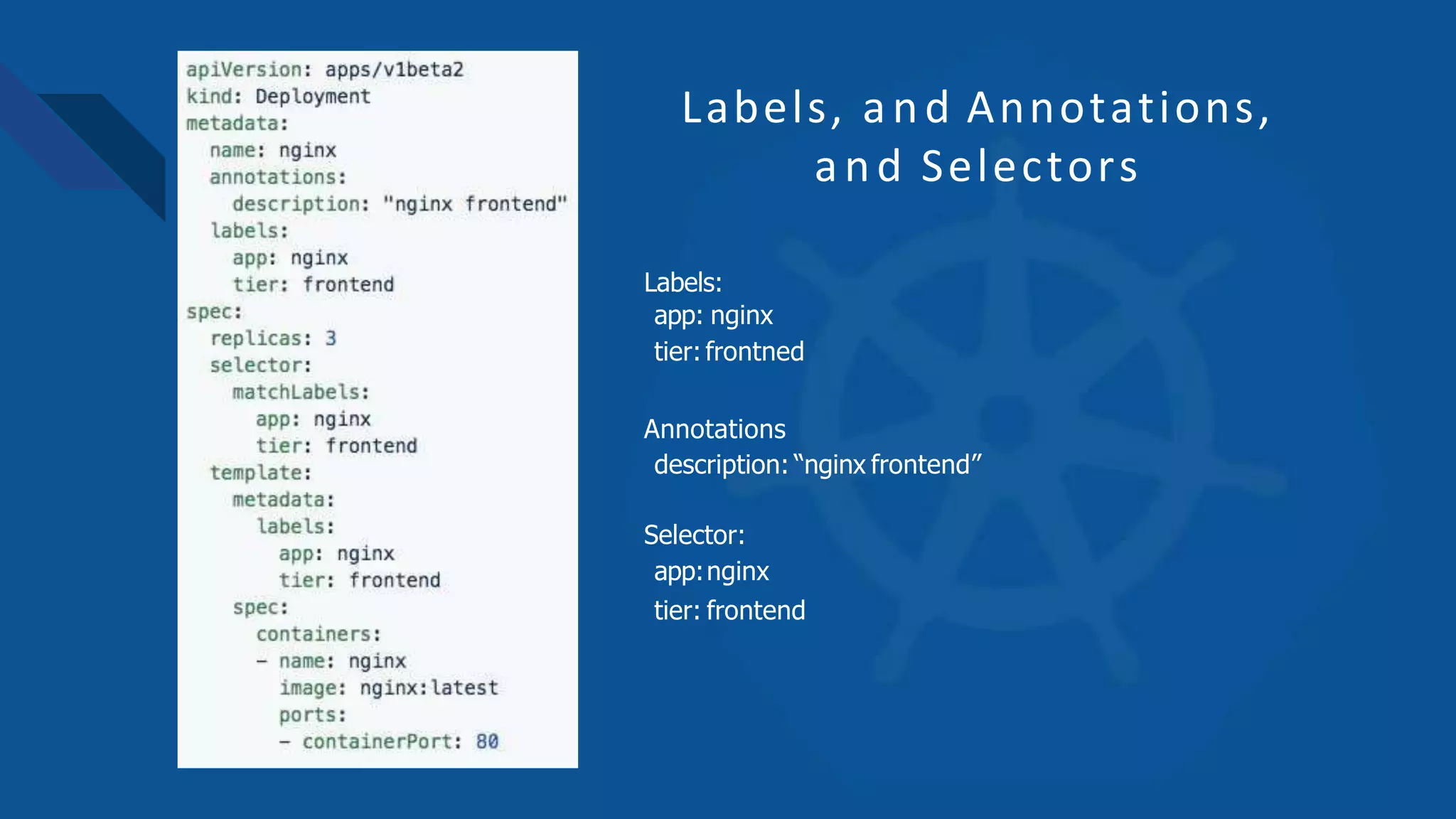
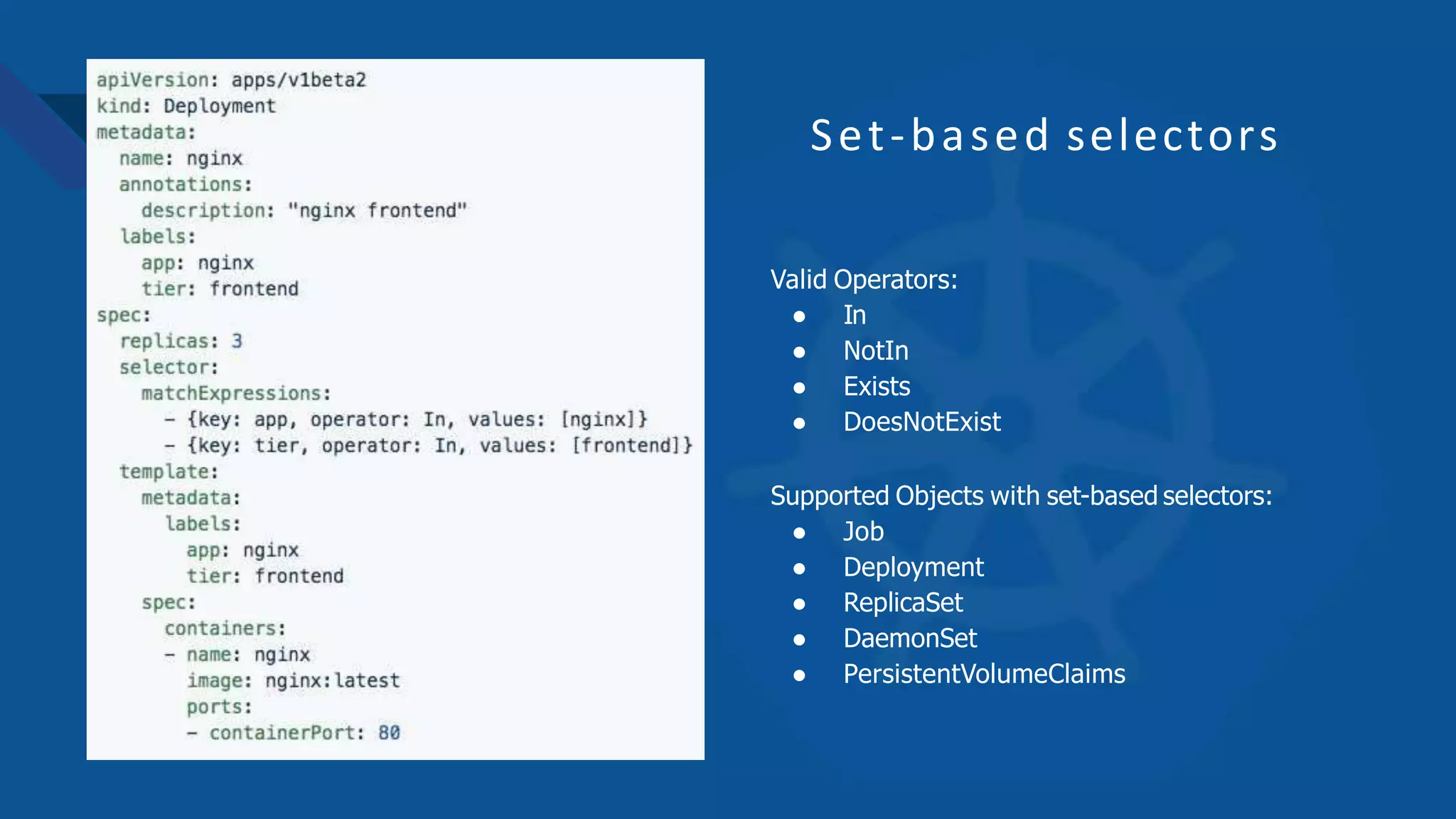



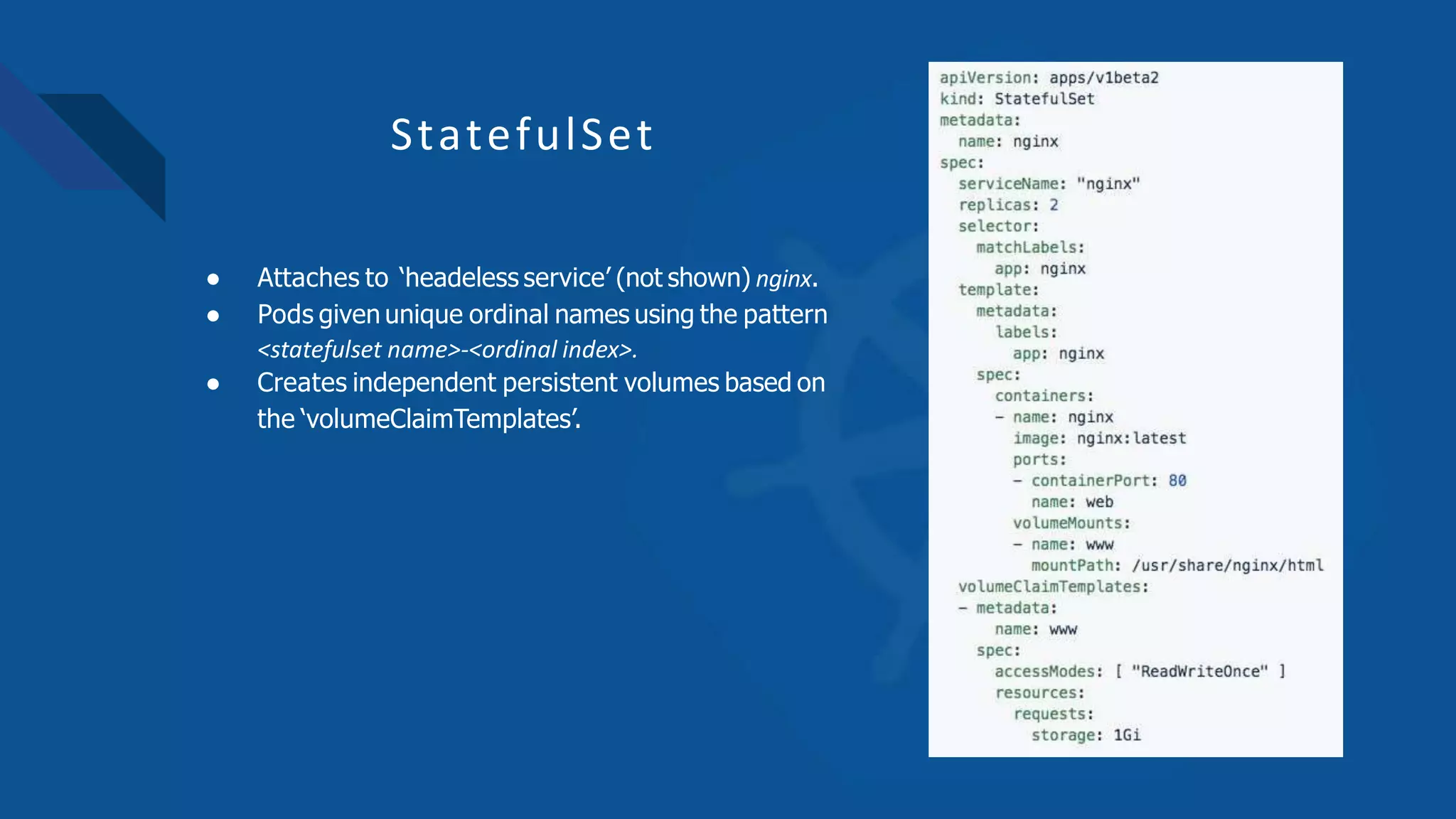
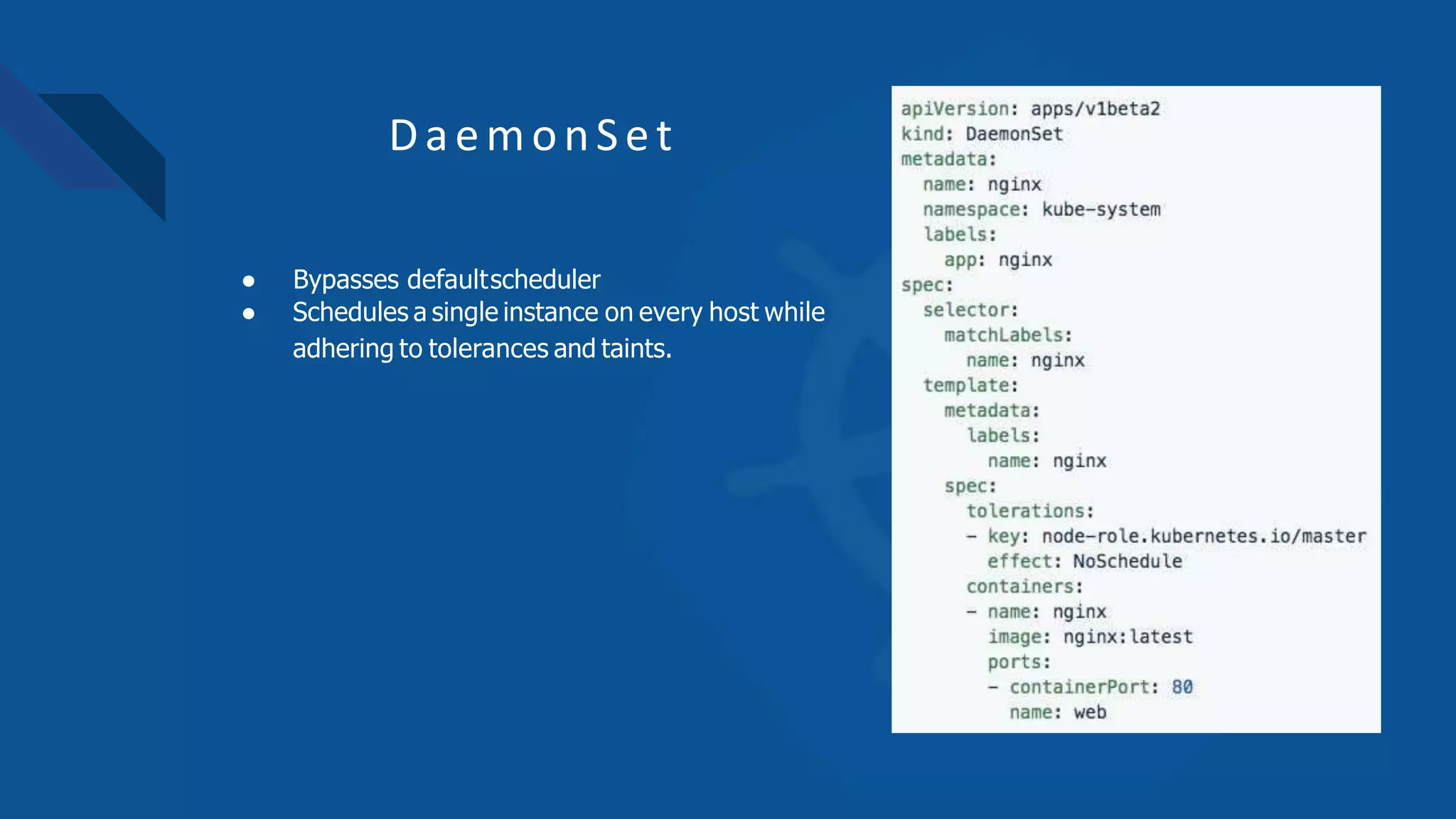

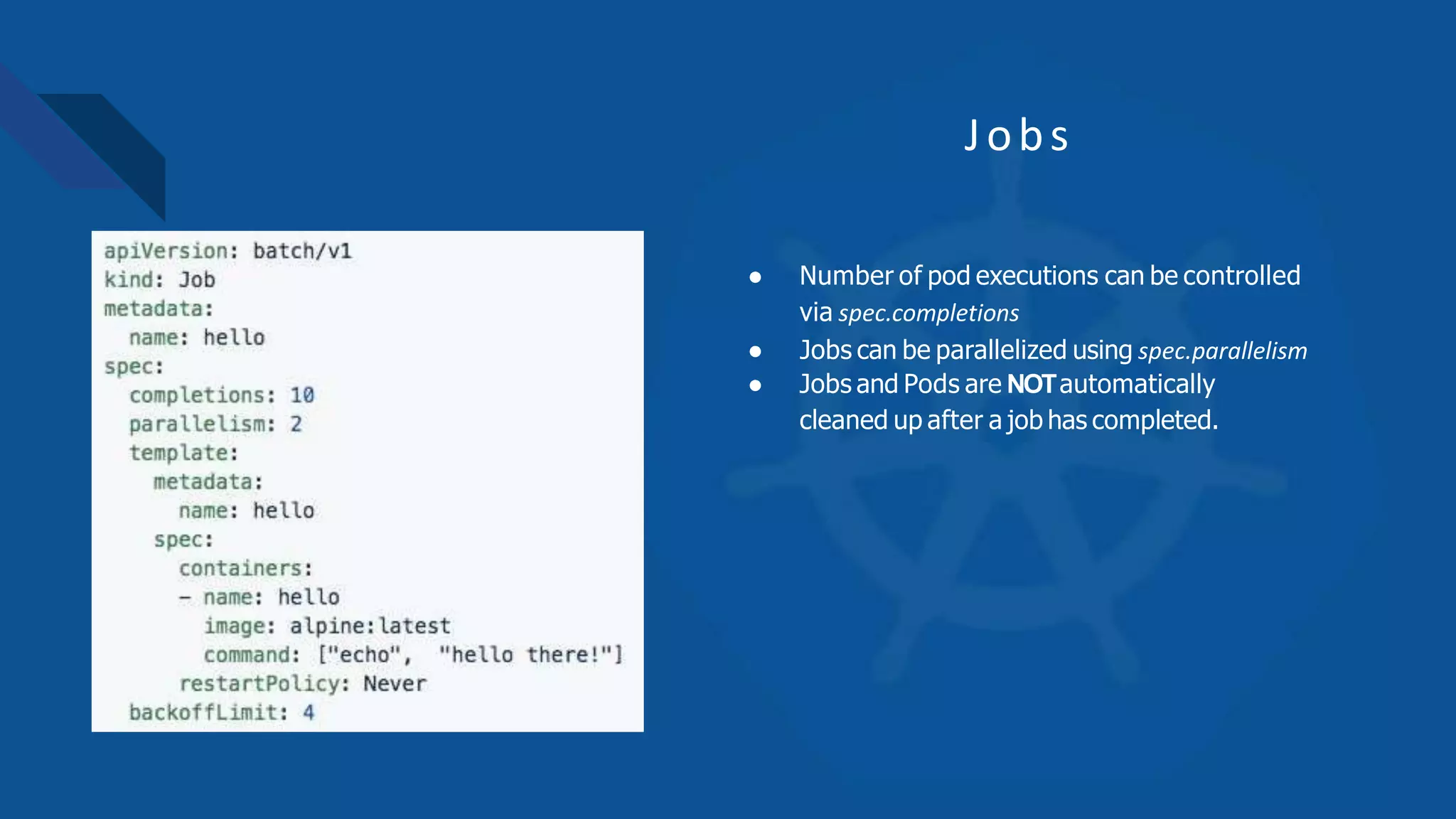

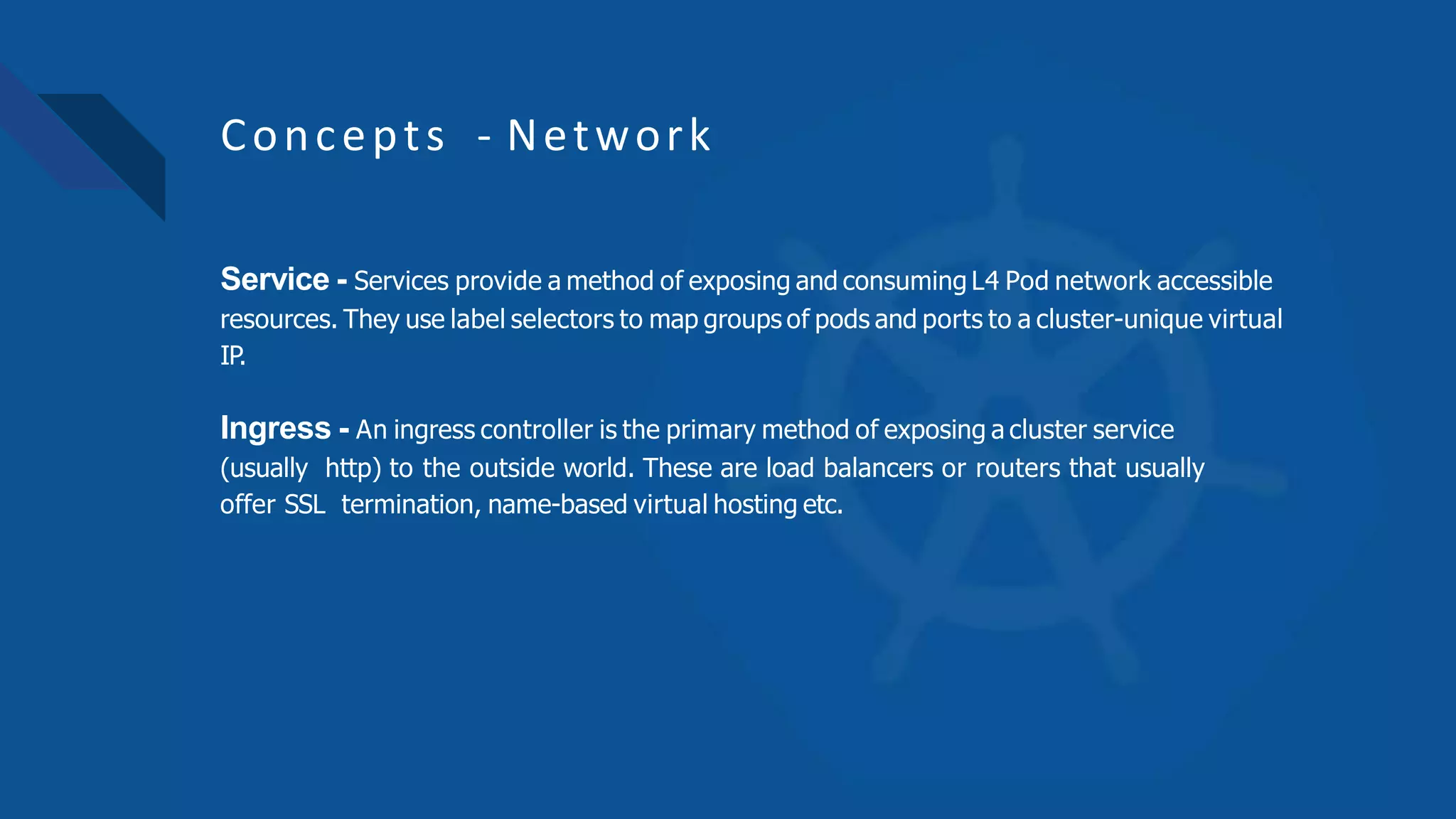
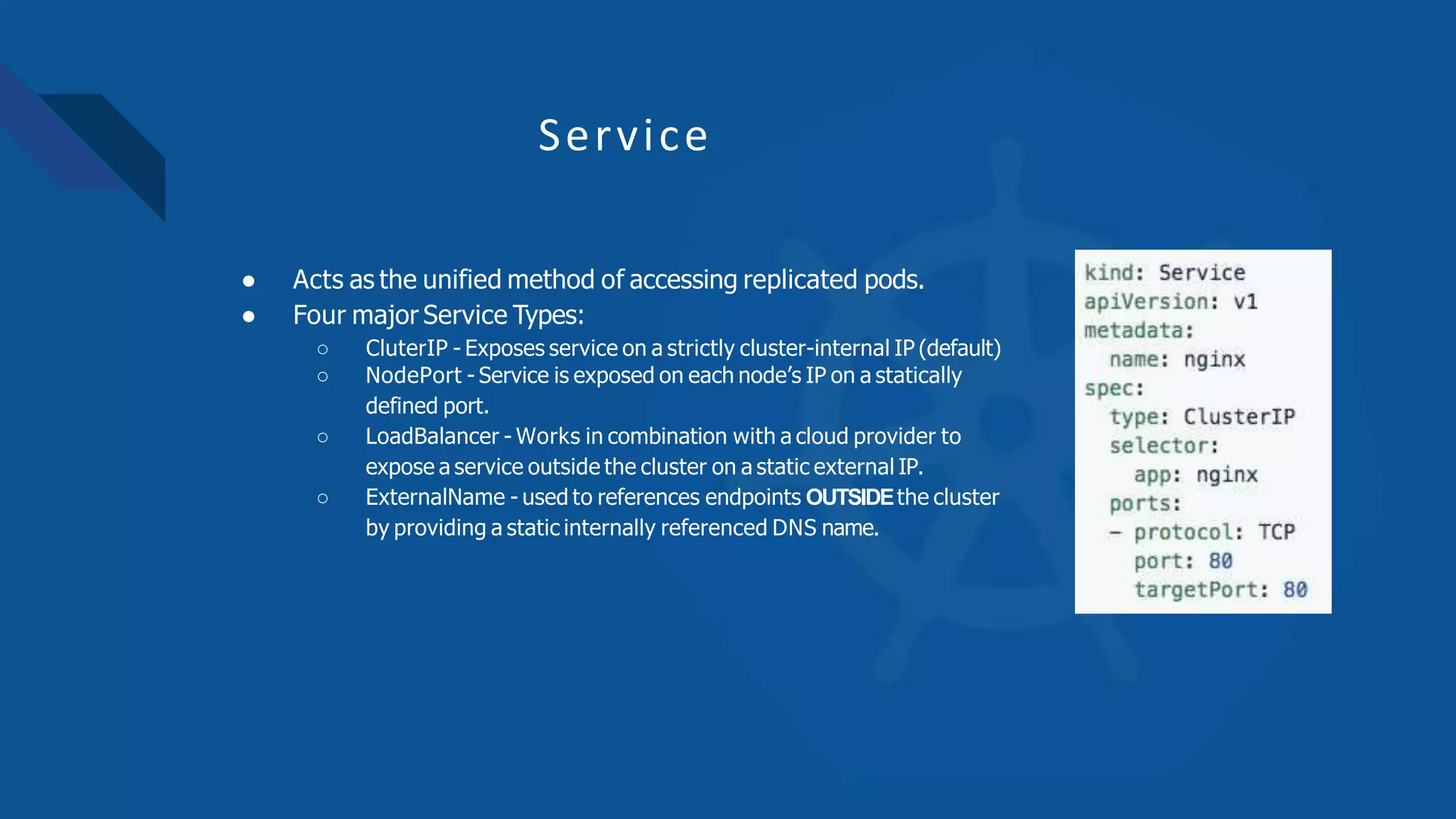
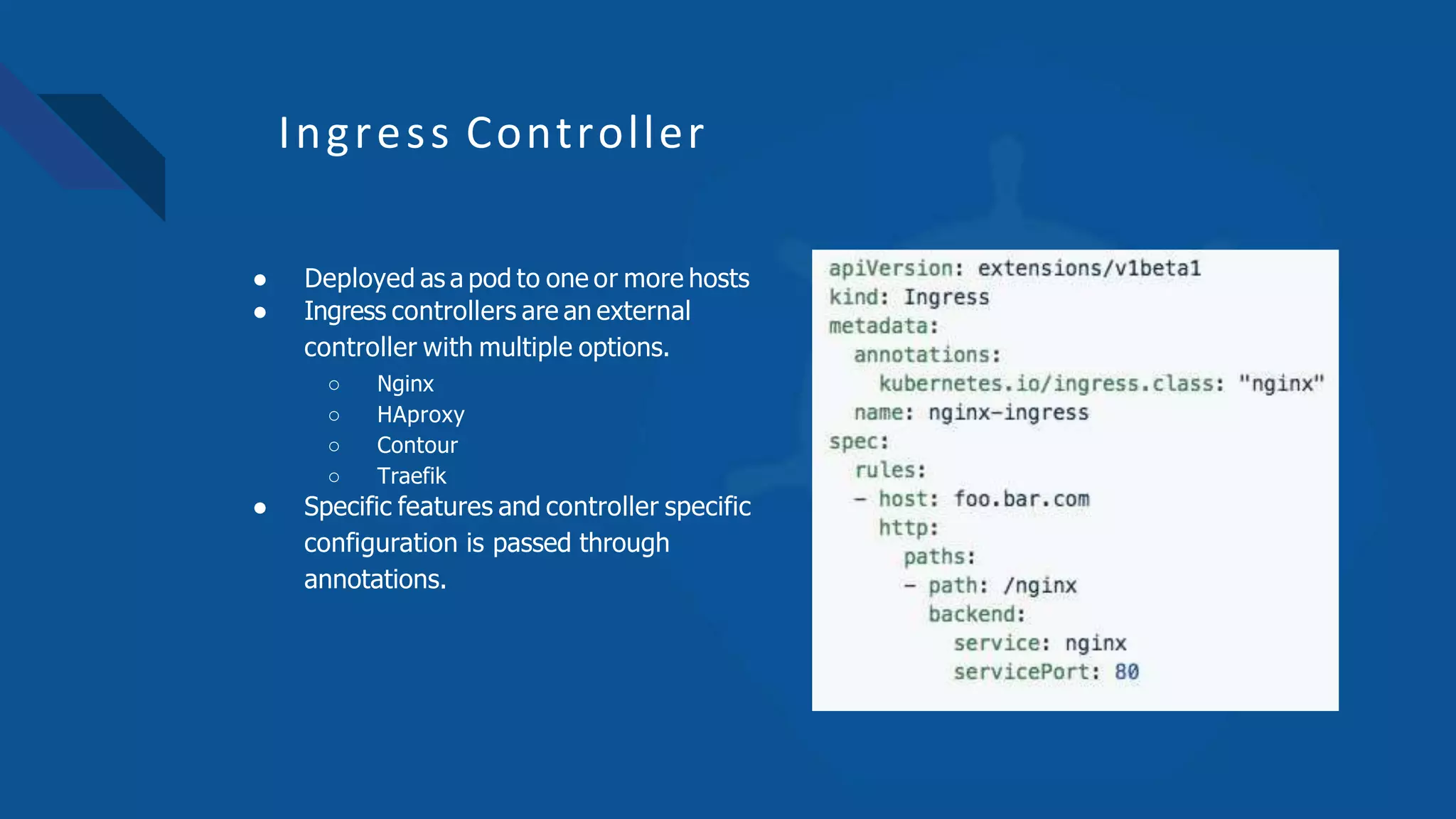

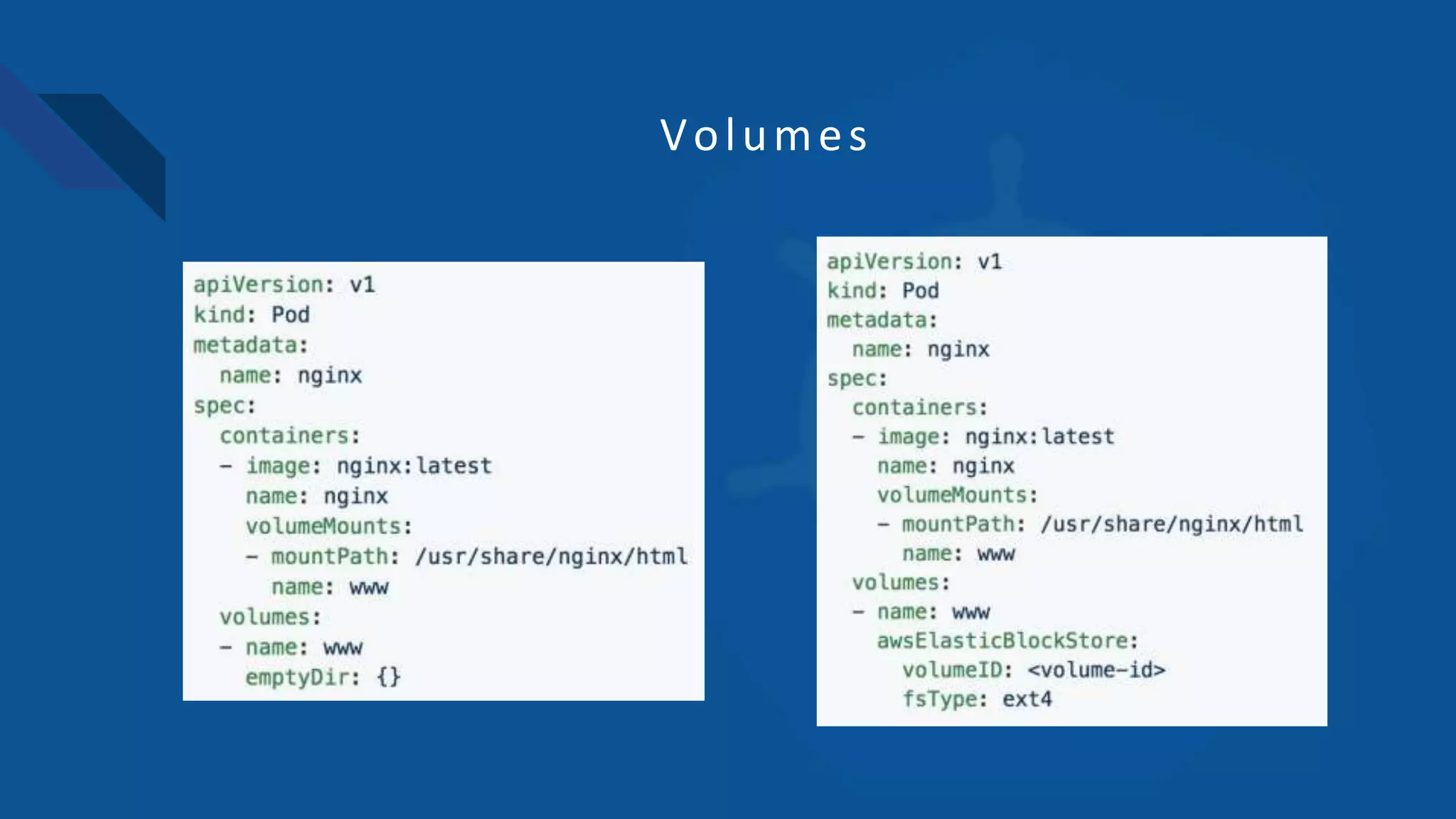
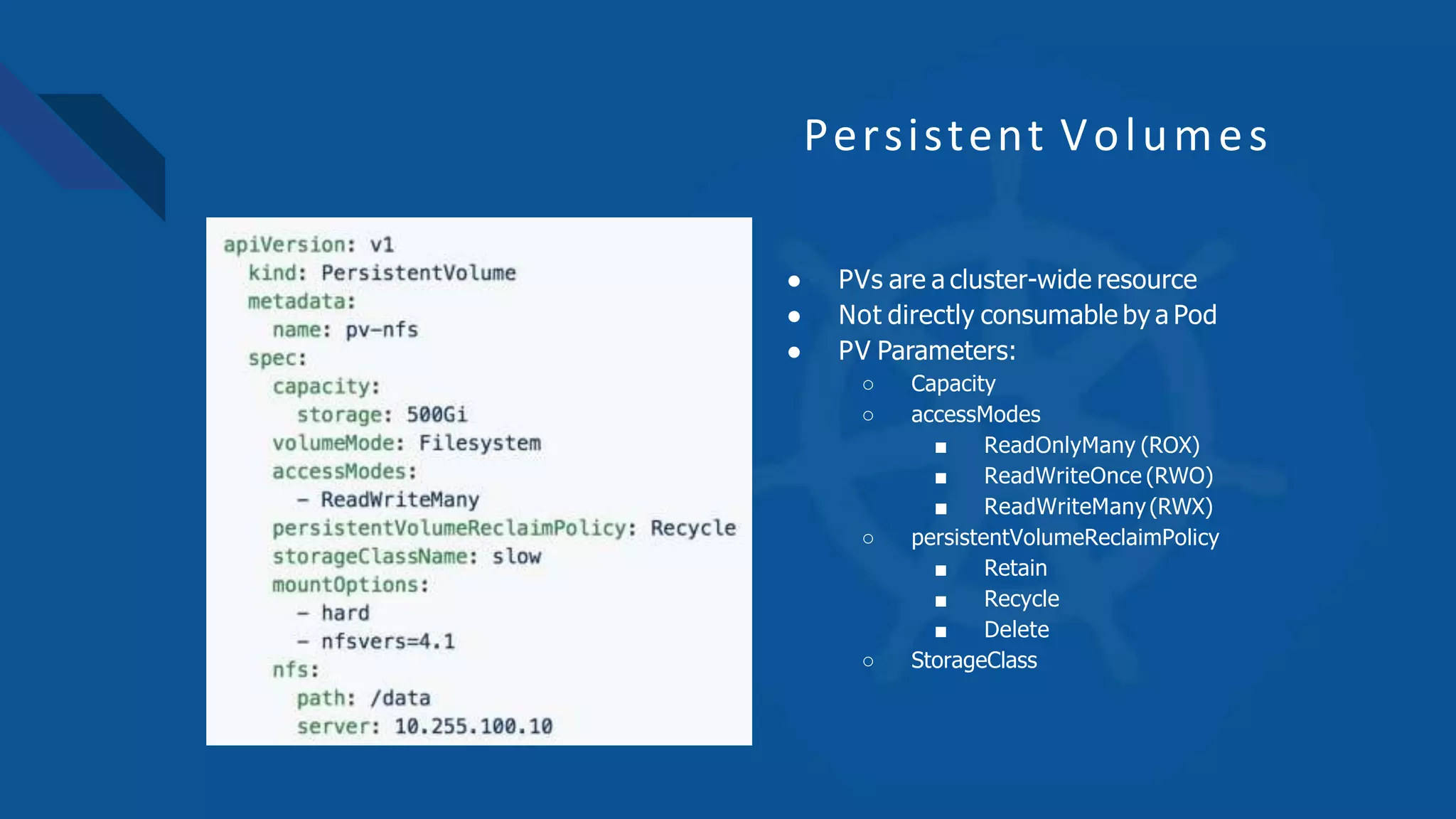

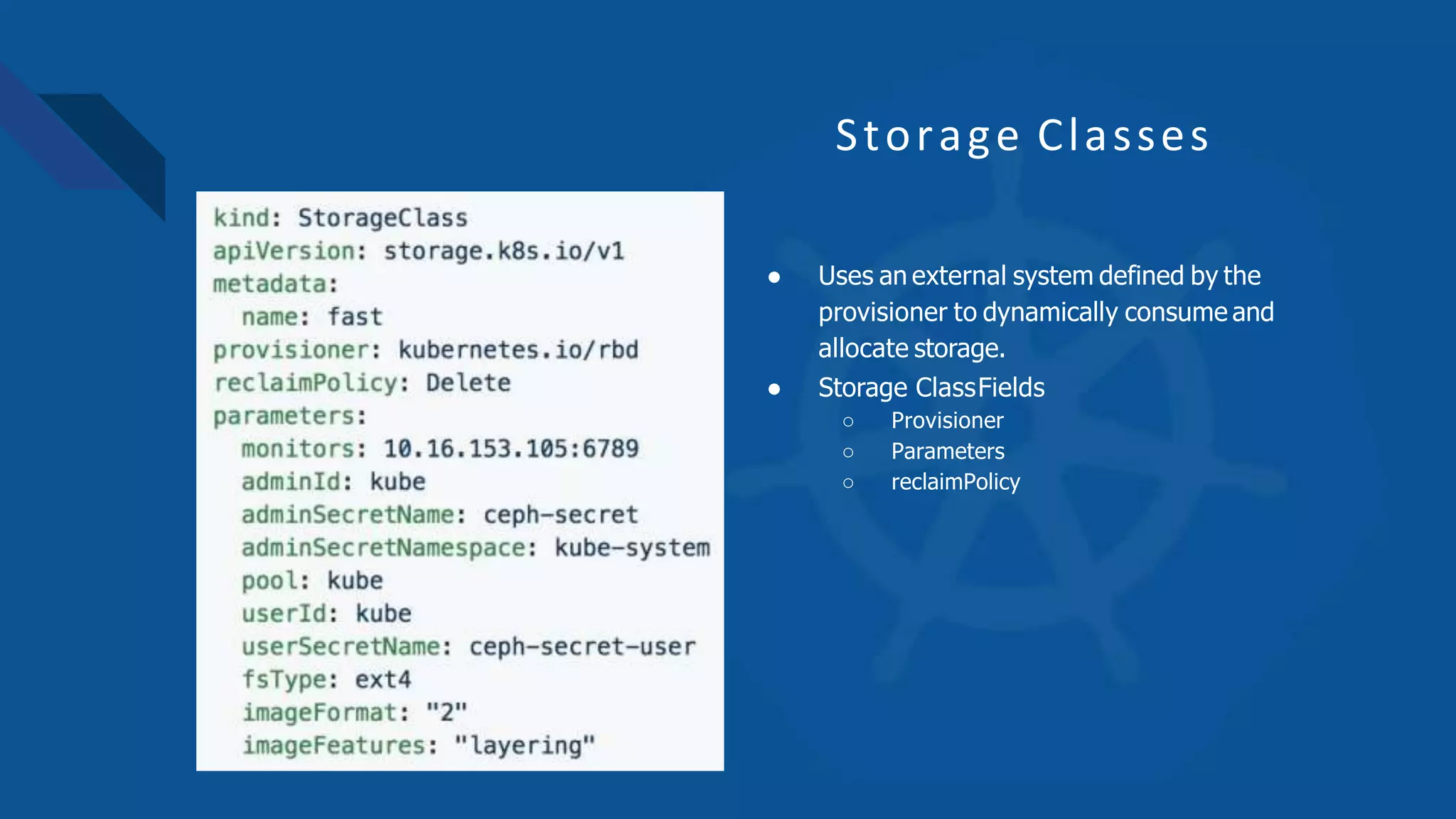
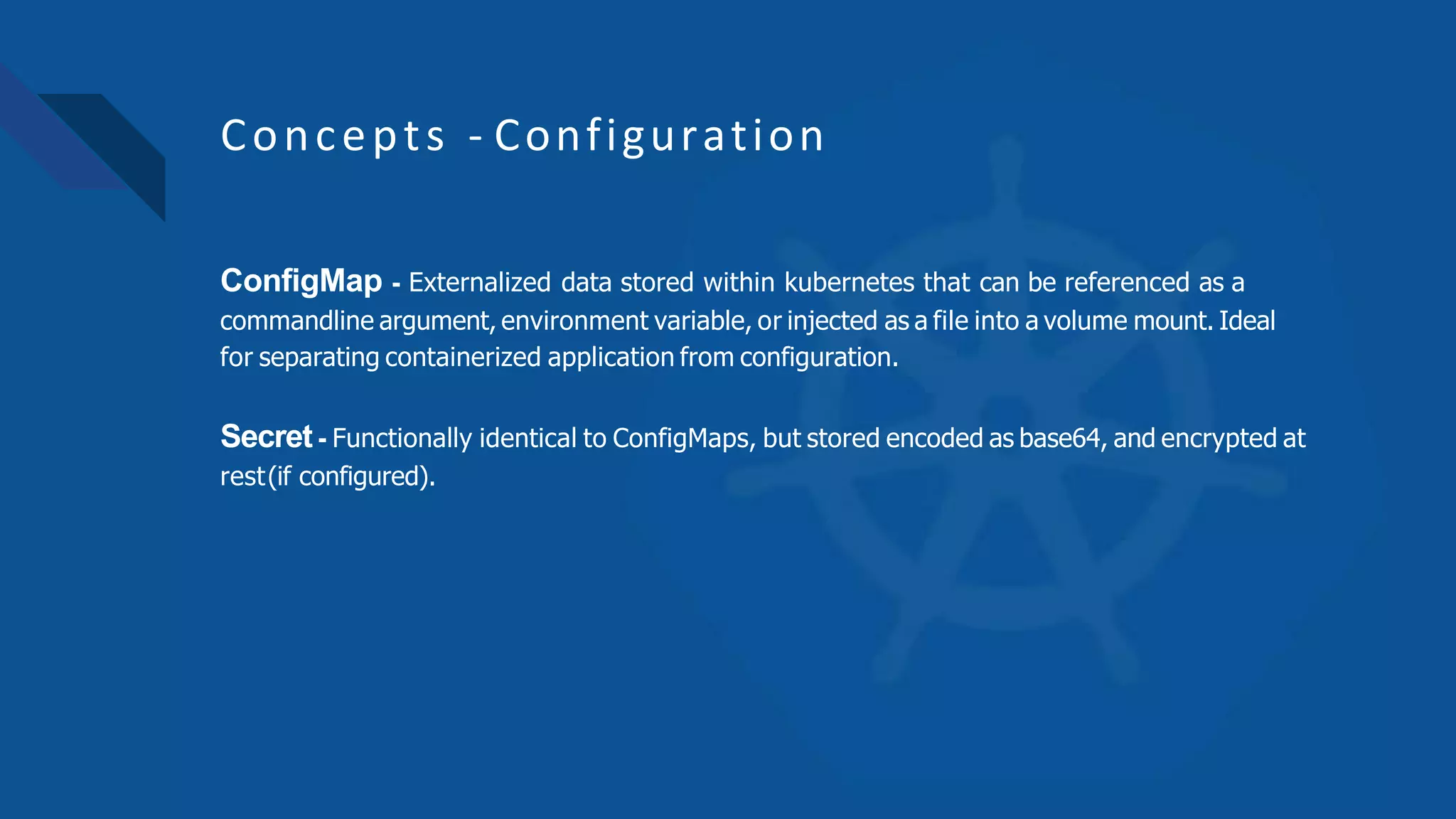

![Concepts - Auth and Identity (RBAC)
[Cluster]Role - Roles contain rules that act as a set of permissions that apply verbs like “get”,
“list”, “watch” etc over resources that are scoped to apiGroups. Roles are scoped to namespaces,
and ClusterRoles are applied cluster-wide.
[Cluster]RoleBinding - Grant the permissions as defined in a [Cluster]Role to one or more
“subjects” which can be a user, group, or service account.
ServiceAccount- ServiceAccounts provide a consumable identity for pods or external
services that interact with the cluster directly and are scoped to namespaces.](https://image.slidesharecdn.com/kubernetesppt-230717000954-1db4eaf1/75/Kubernetes-PPT-pptx-49-2048.jpg)
![[Cluster]Role
● Permissions translate to url
path. With “” defaulting to core
group.
● Resources act as items the role
should be granted access to.
● Verbs are the actions the role
can perform on the referenced
resources.](https://image.slidesharecdn.com/kubernetesppt-230717000954-1db4eaf1/75/Kubernetes-PPT-pptx-50-2048.jpg)
![[Cluster]RoleBinding
● Can reference multiple subjects
● Subjects can be of kind:
○ User
○ Group
○ ServiceAccount
● roleRef targets a single role only.](https://image.slidesharecdn.com/kubernetesppt-230717000954-1db4eaf1/75/Kubernetes-PPT-pptx-51-2048.jpg)













